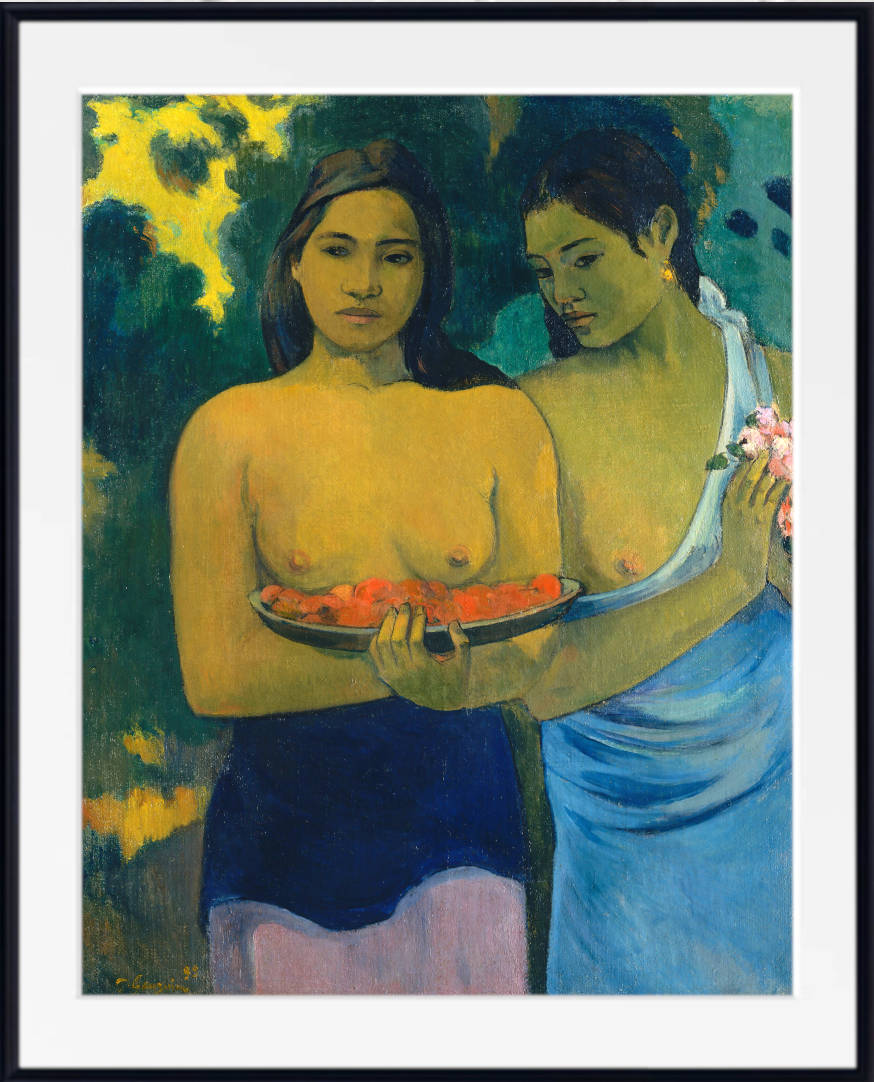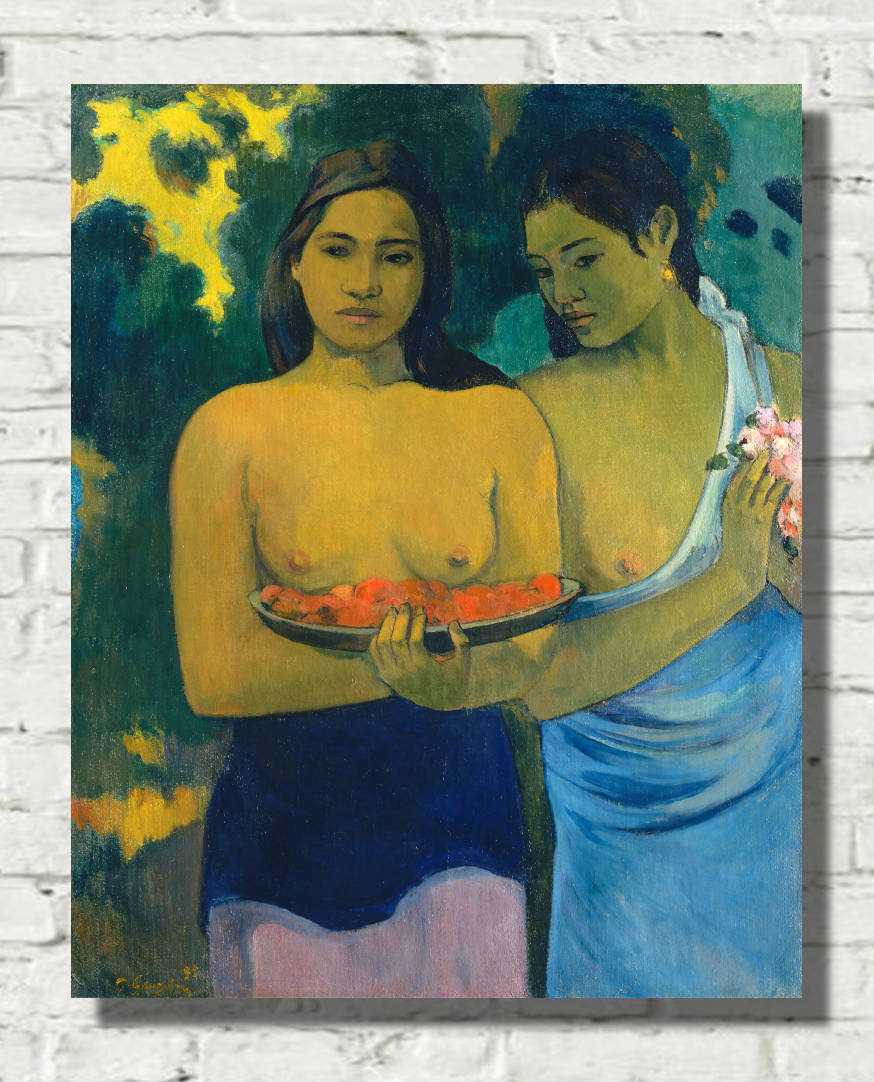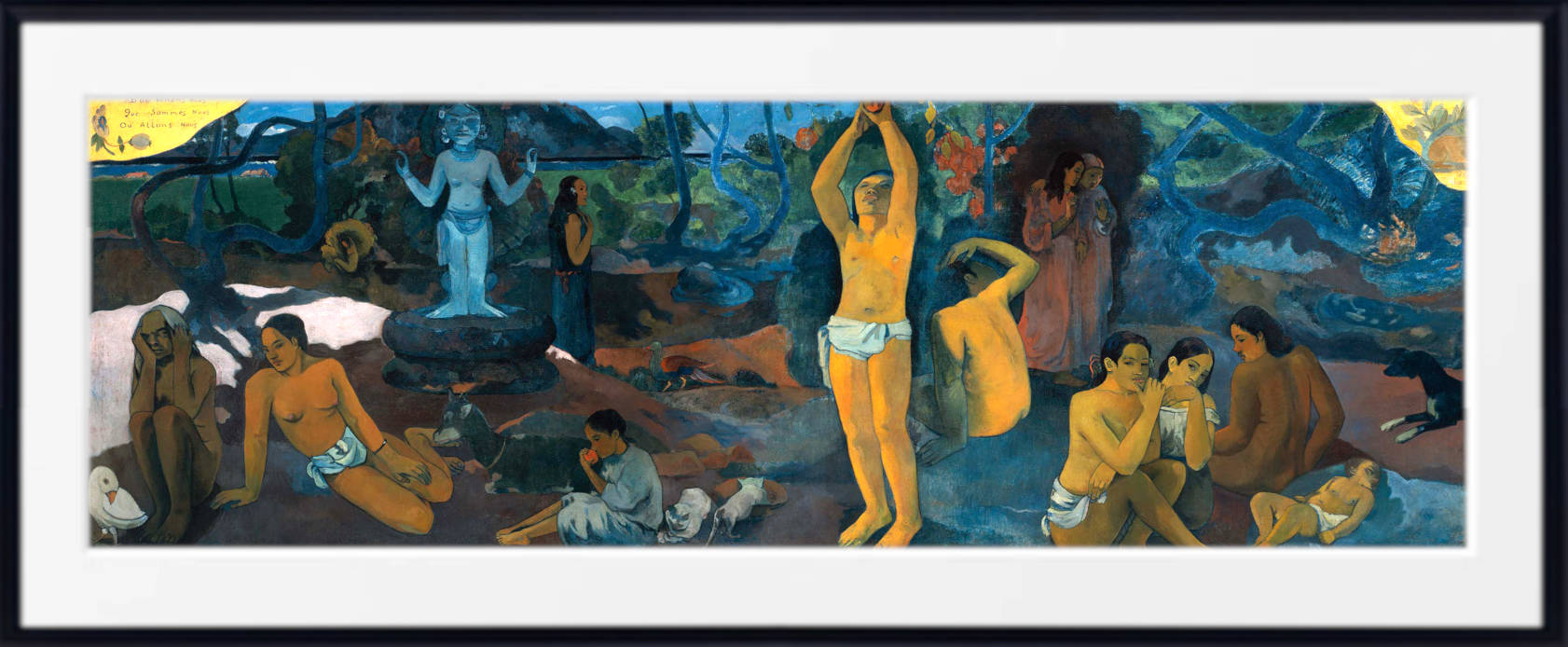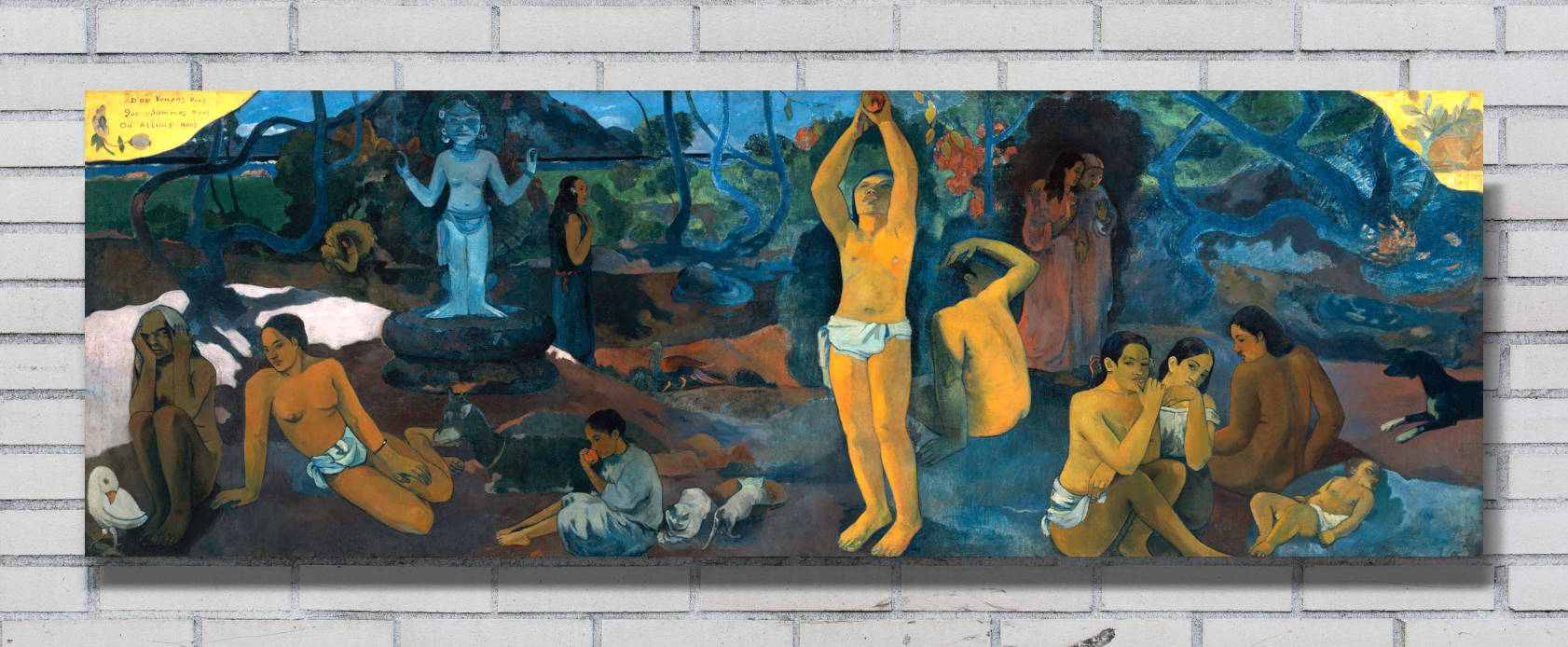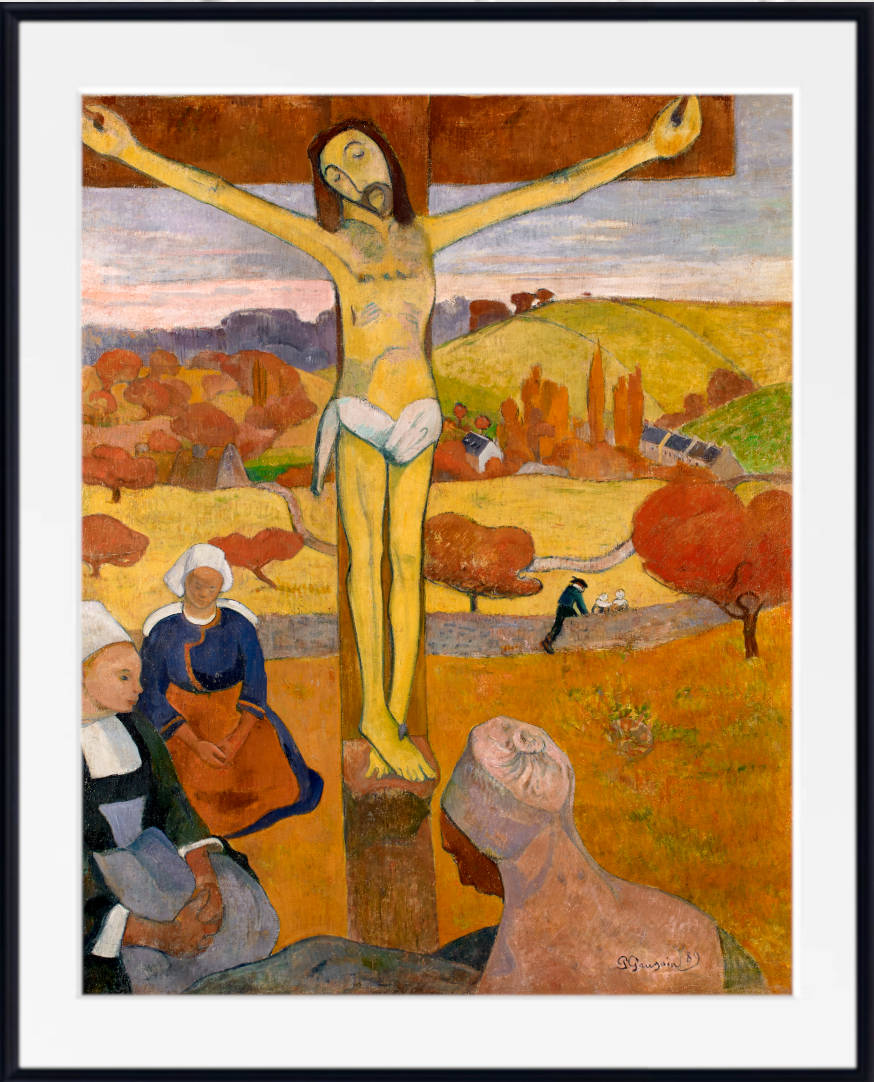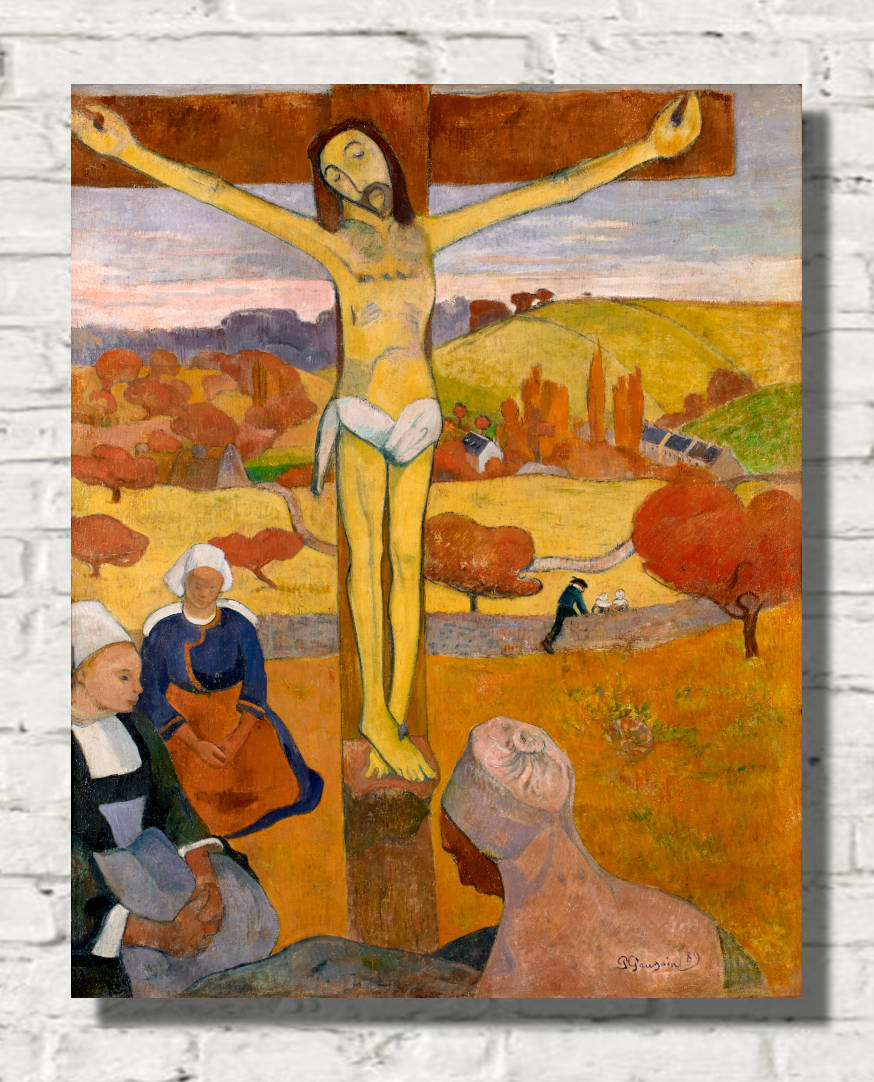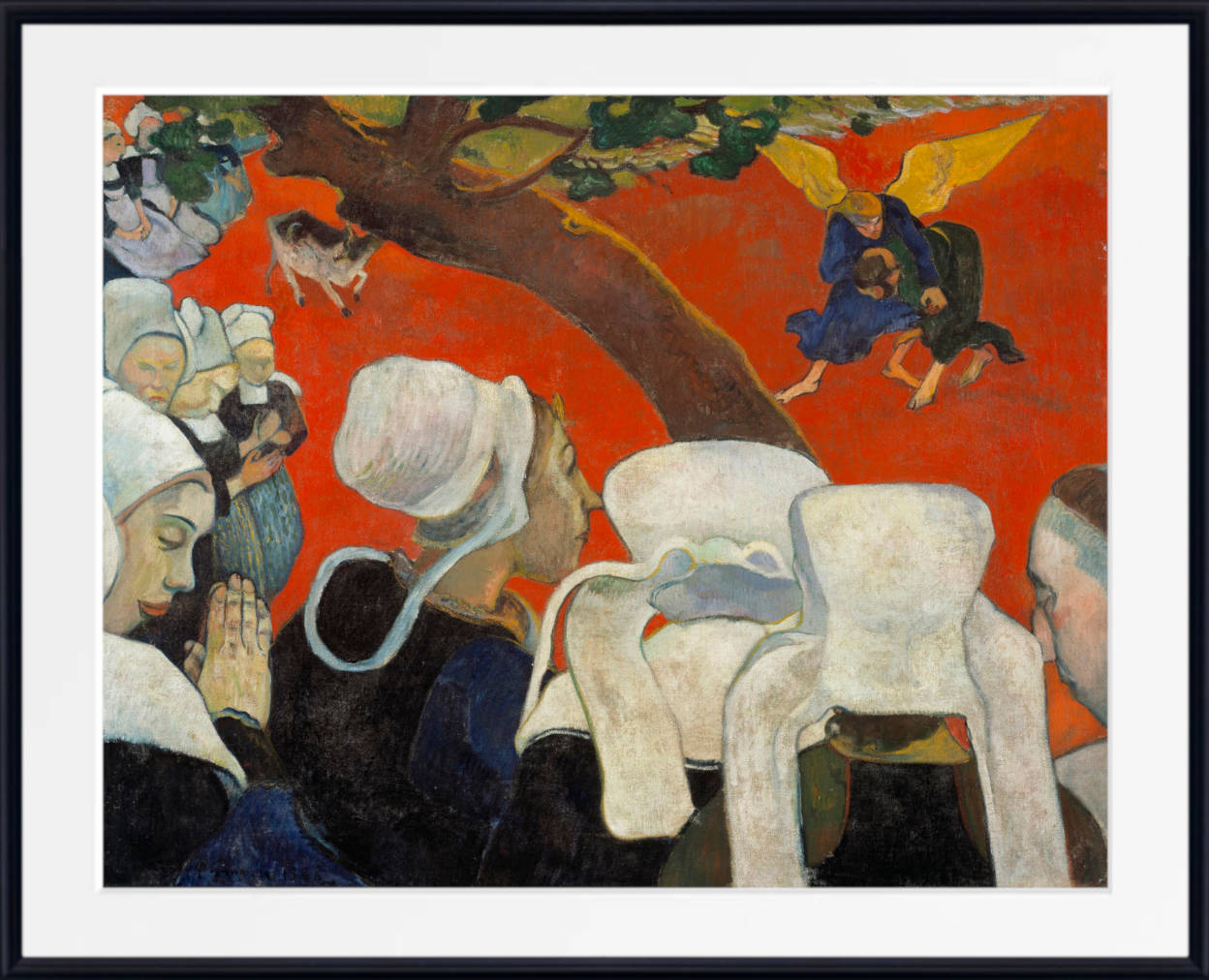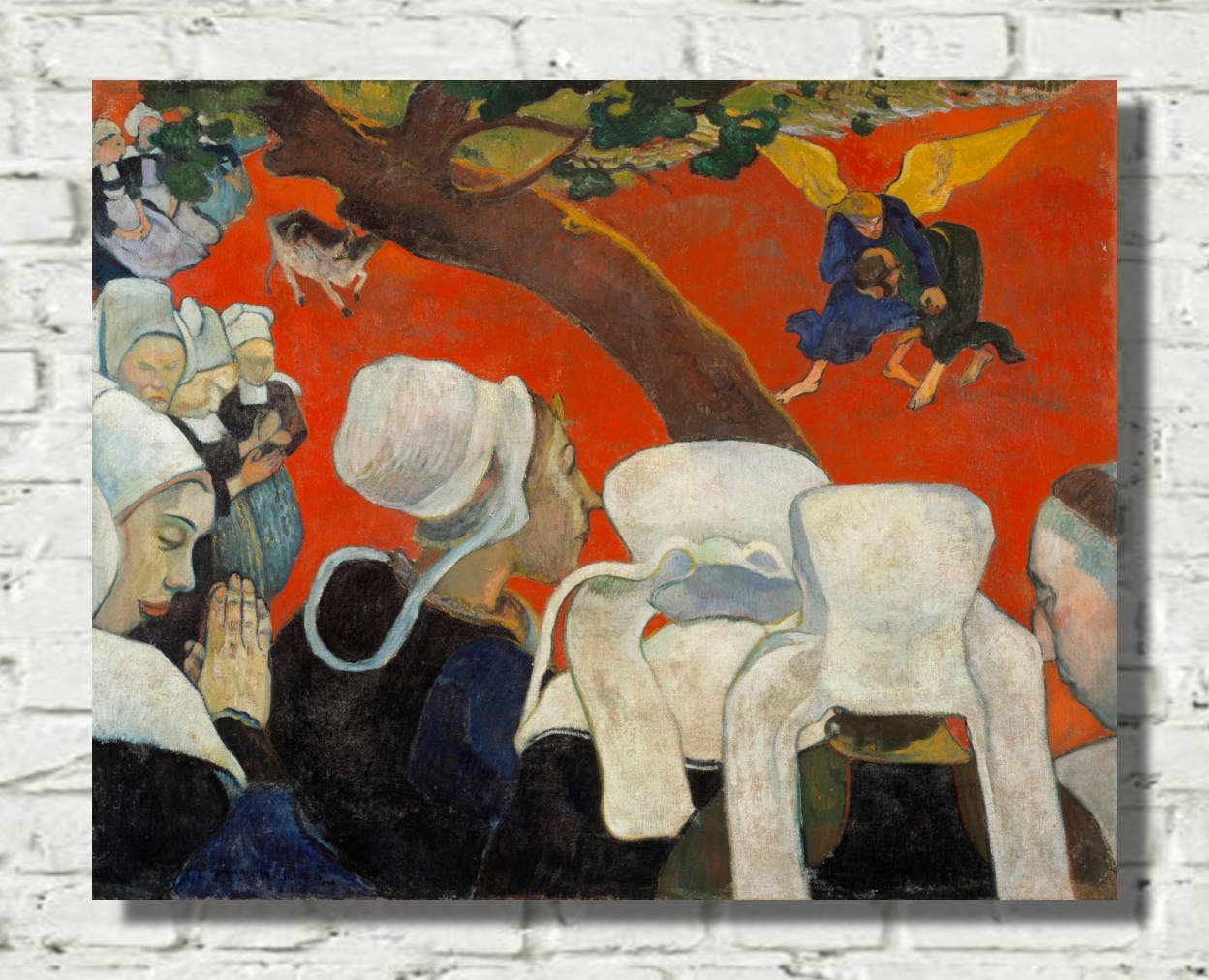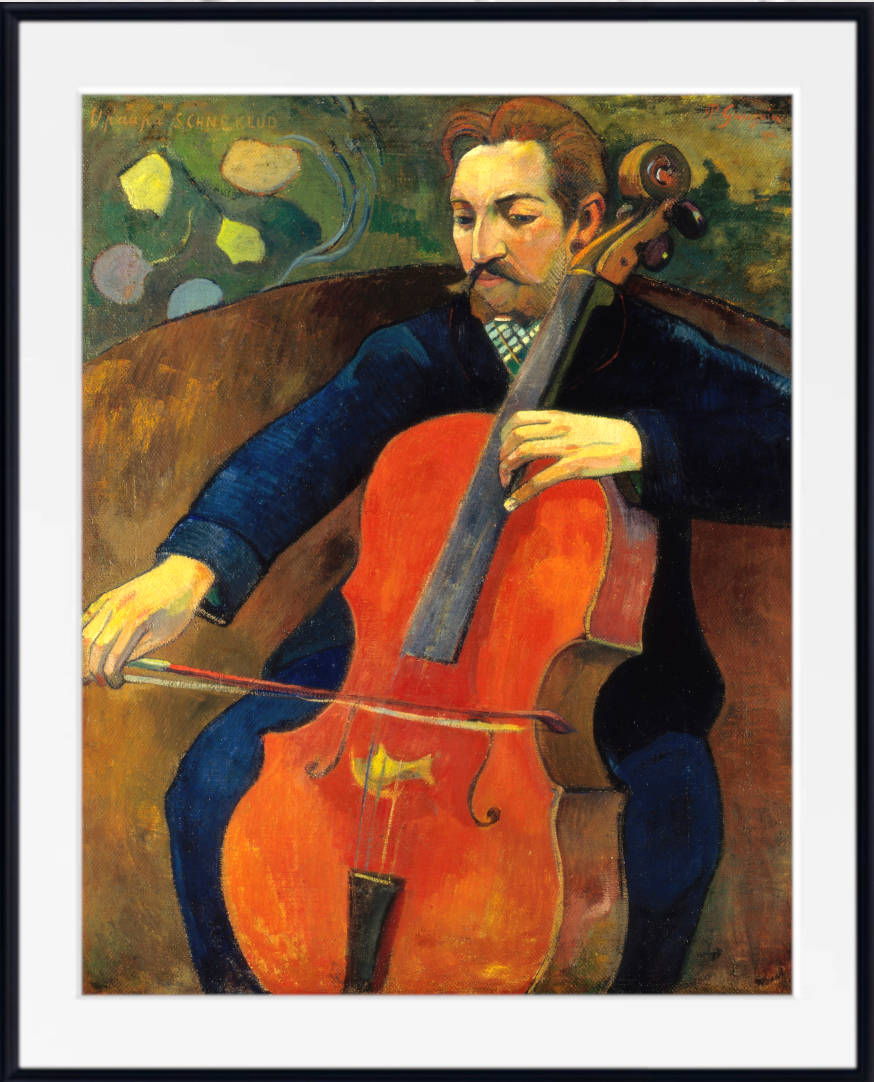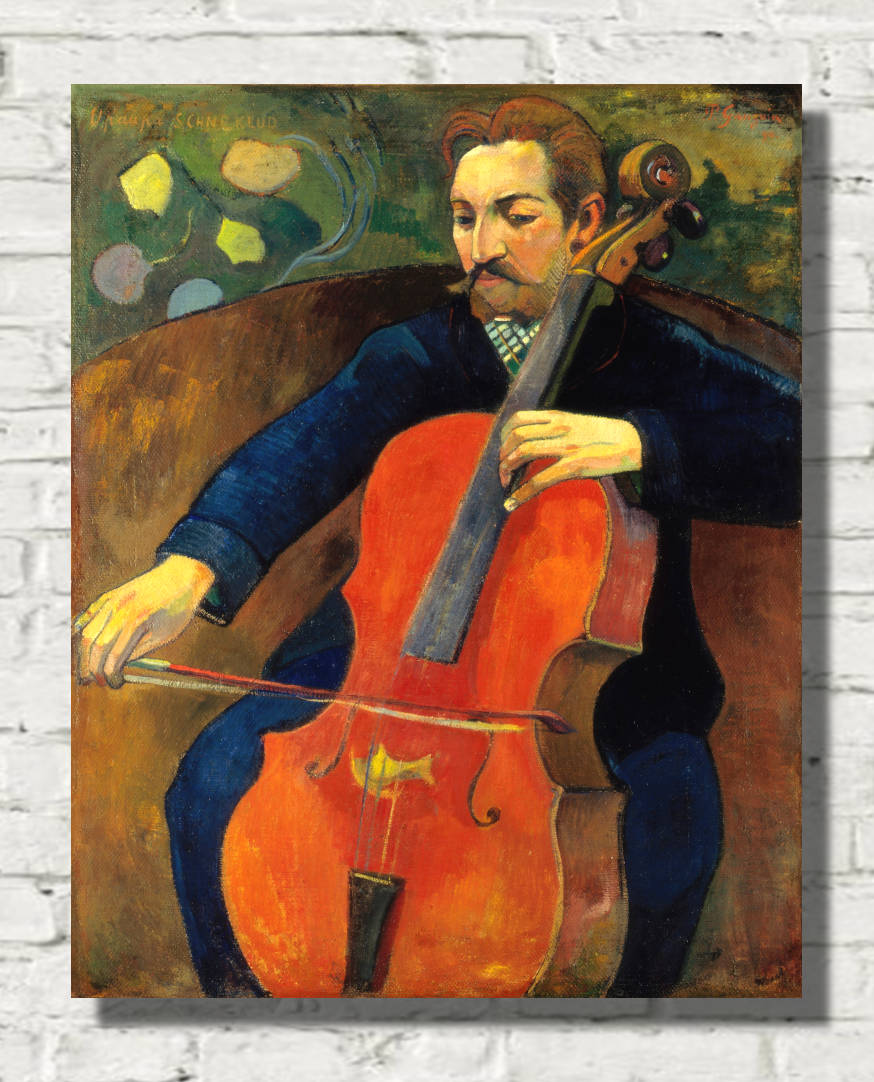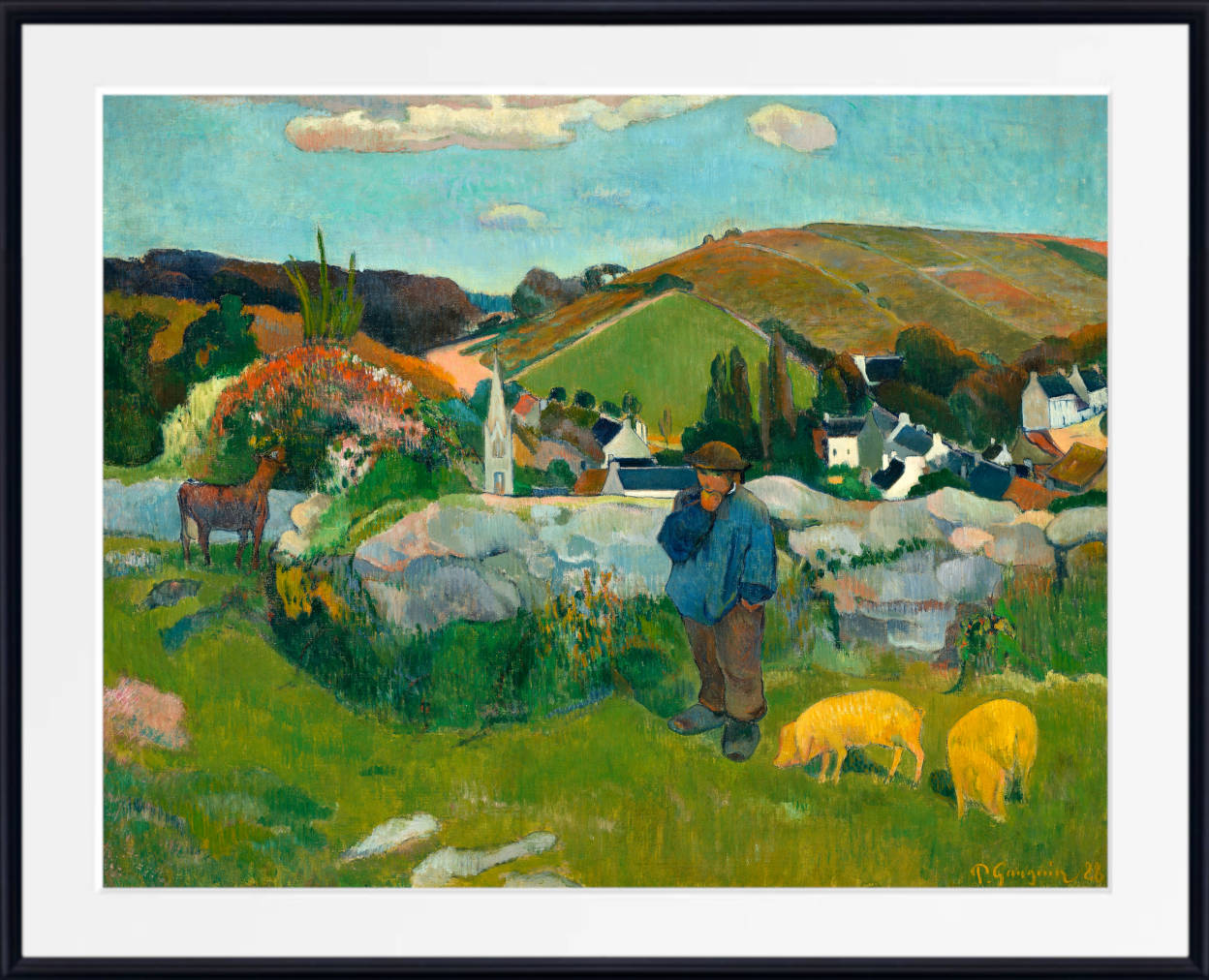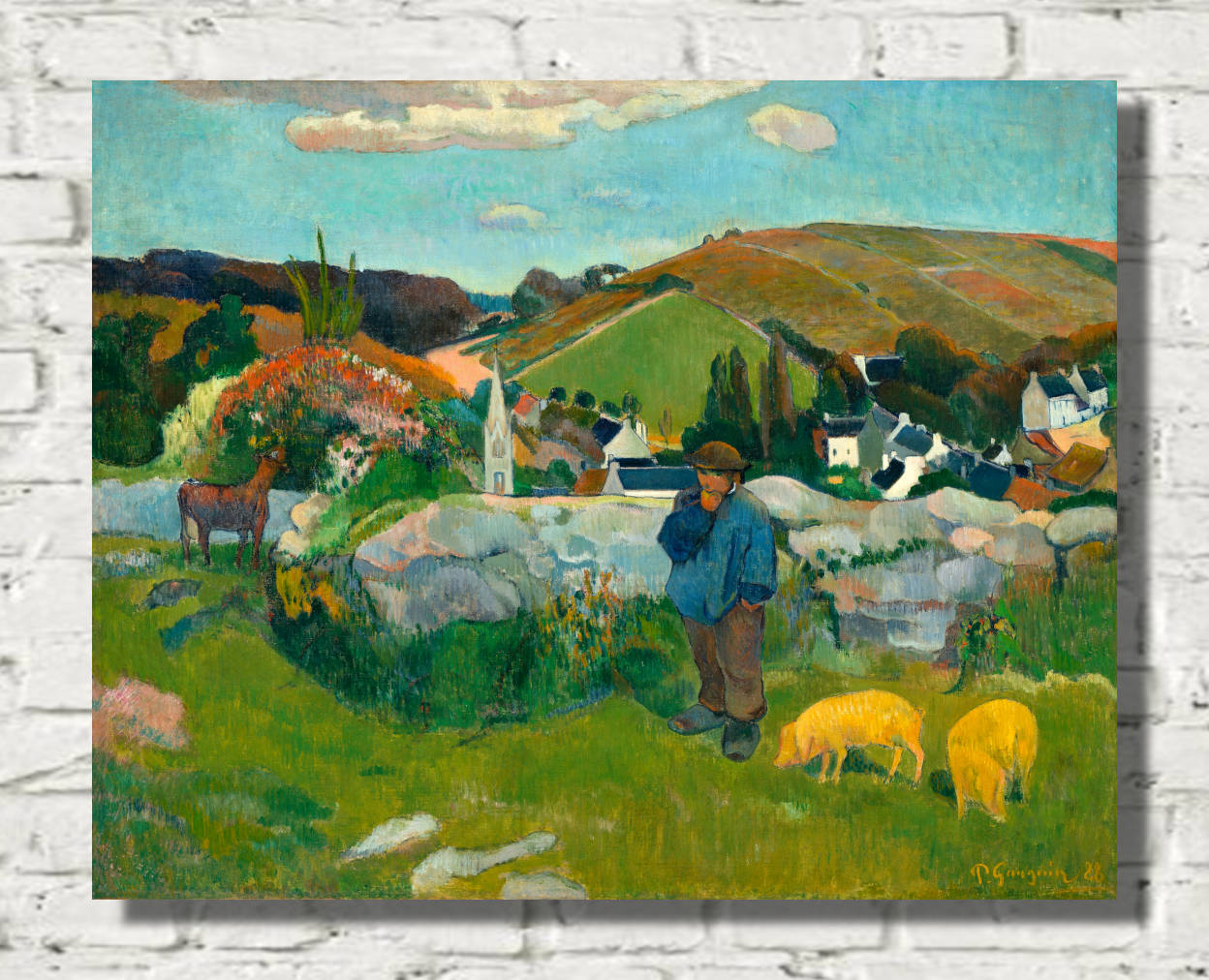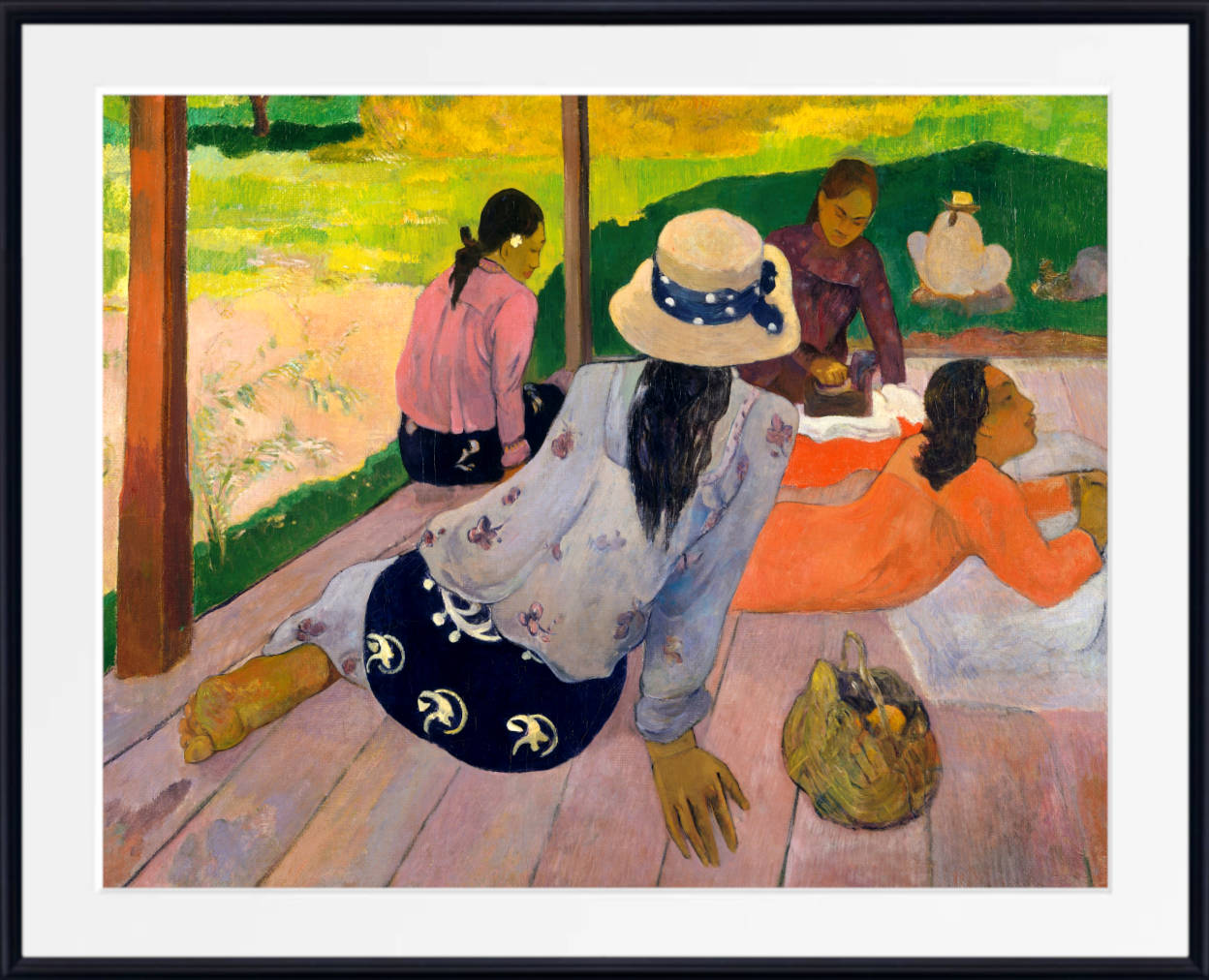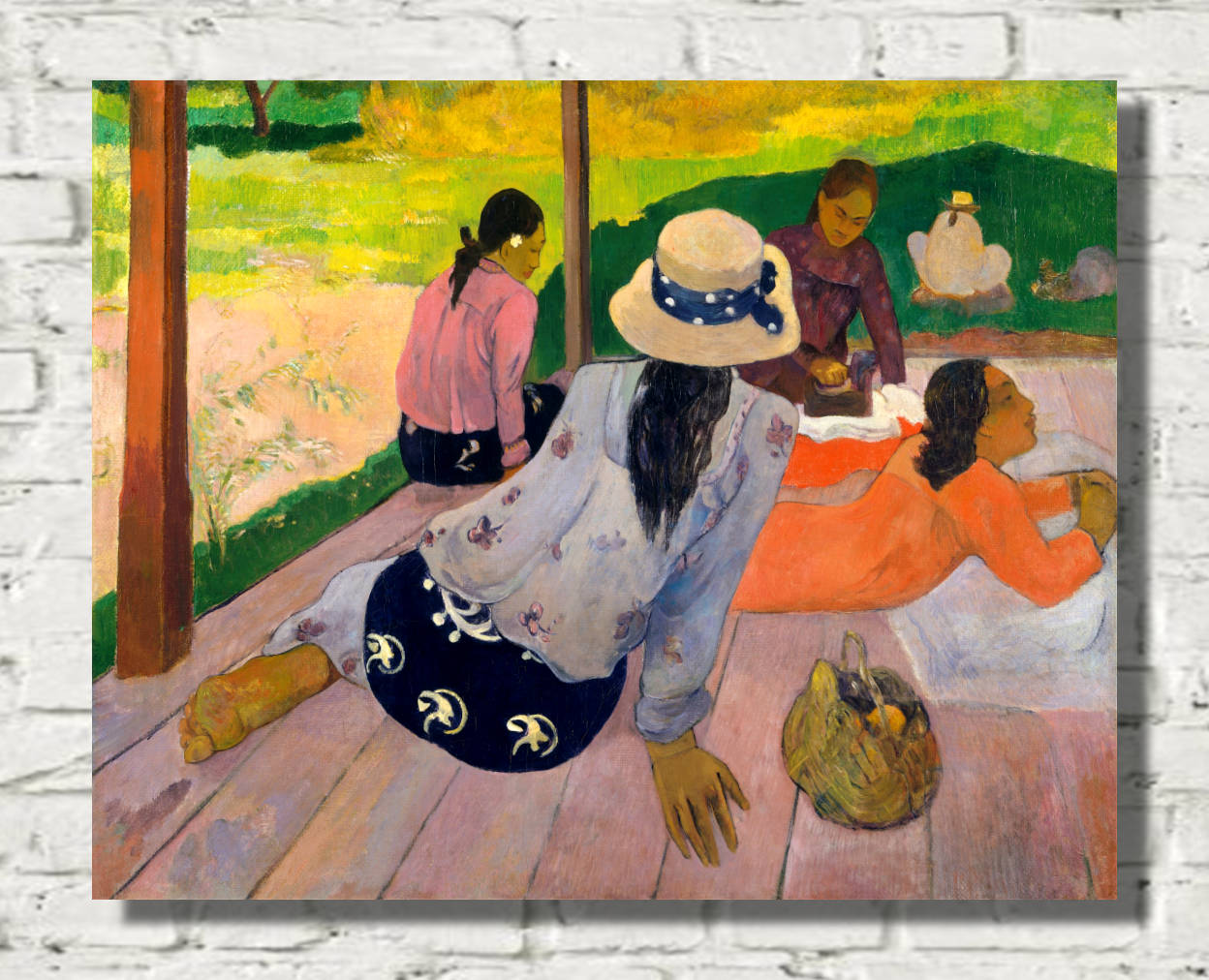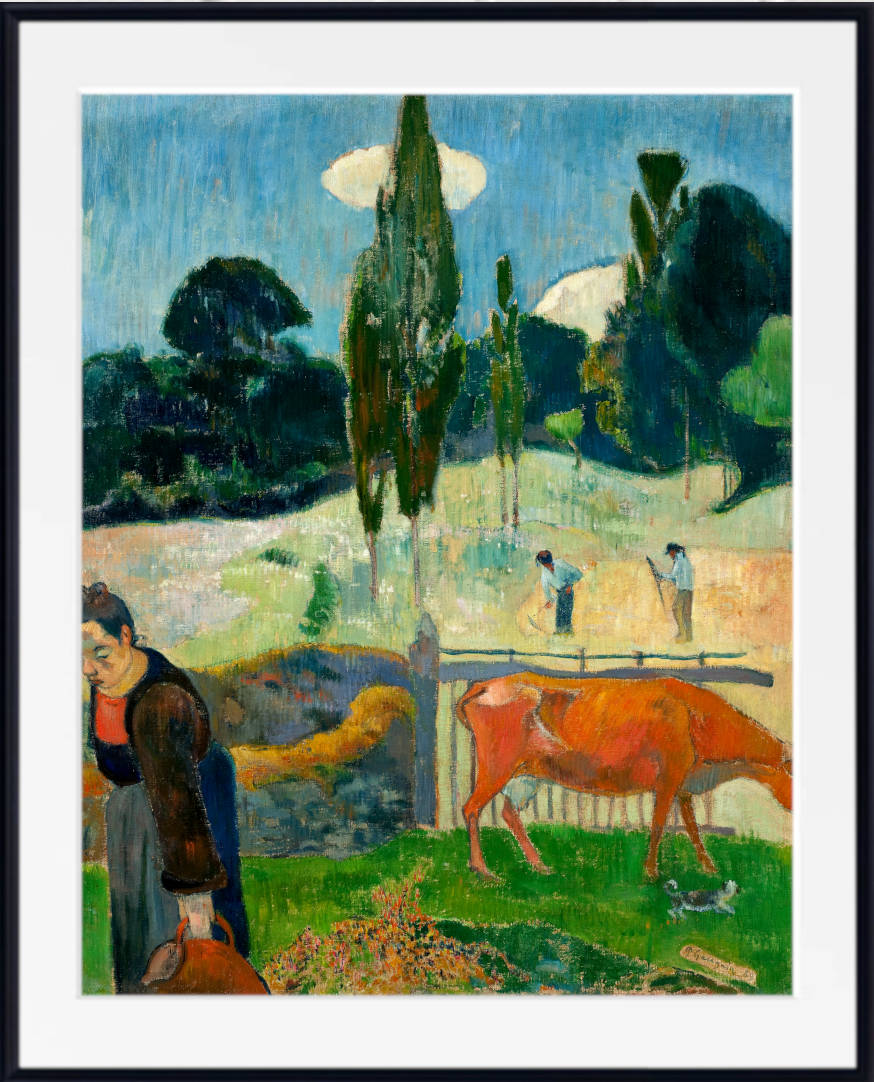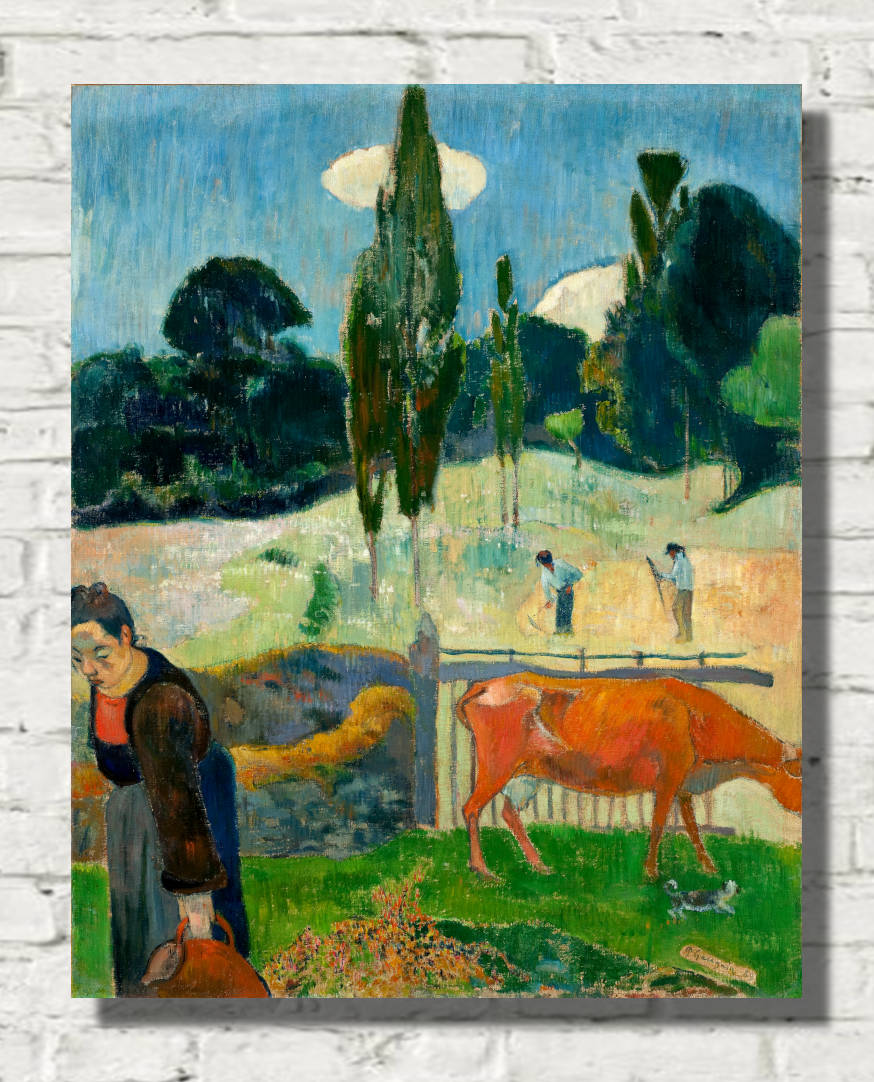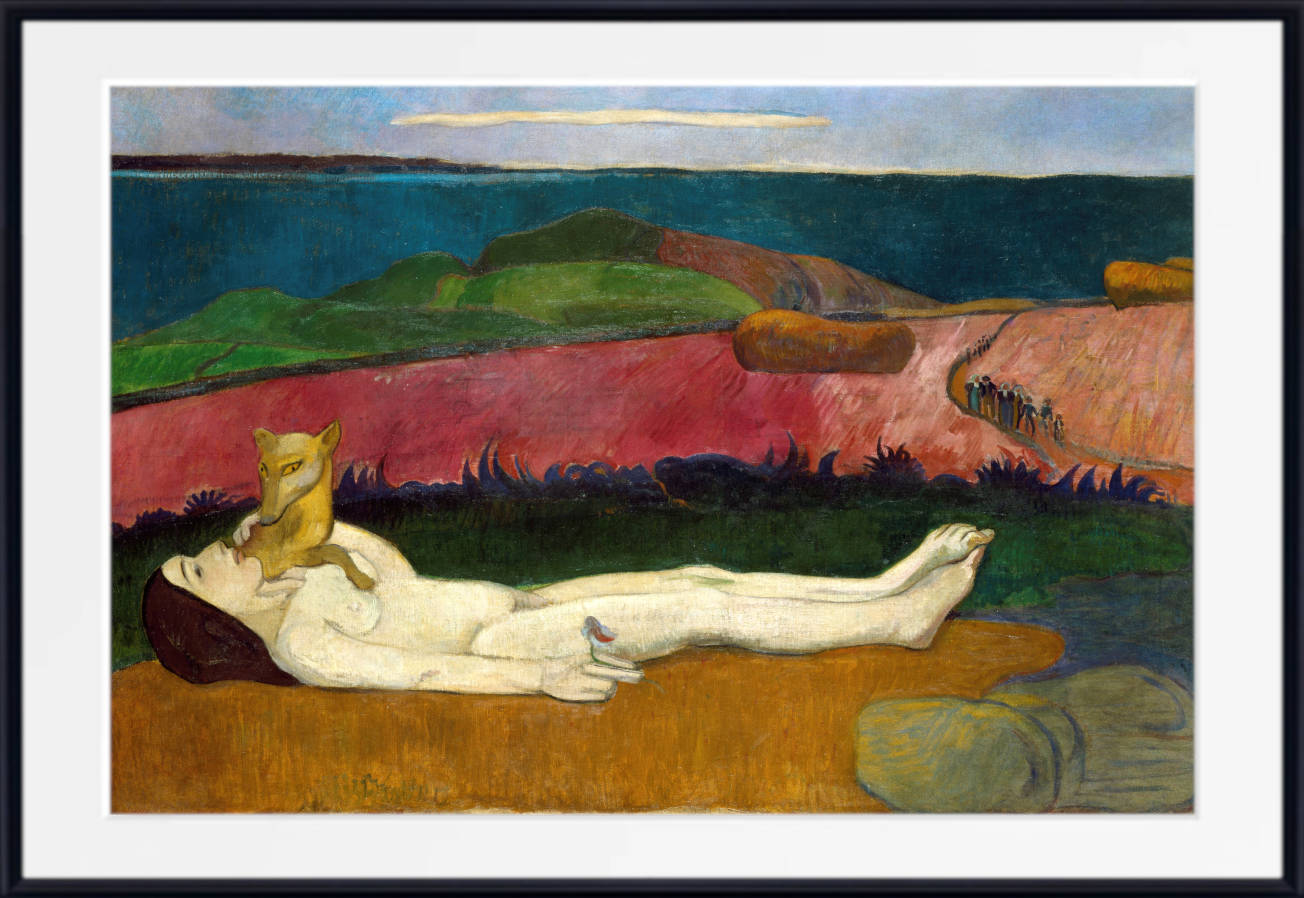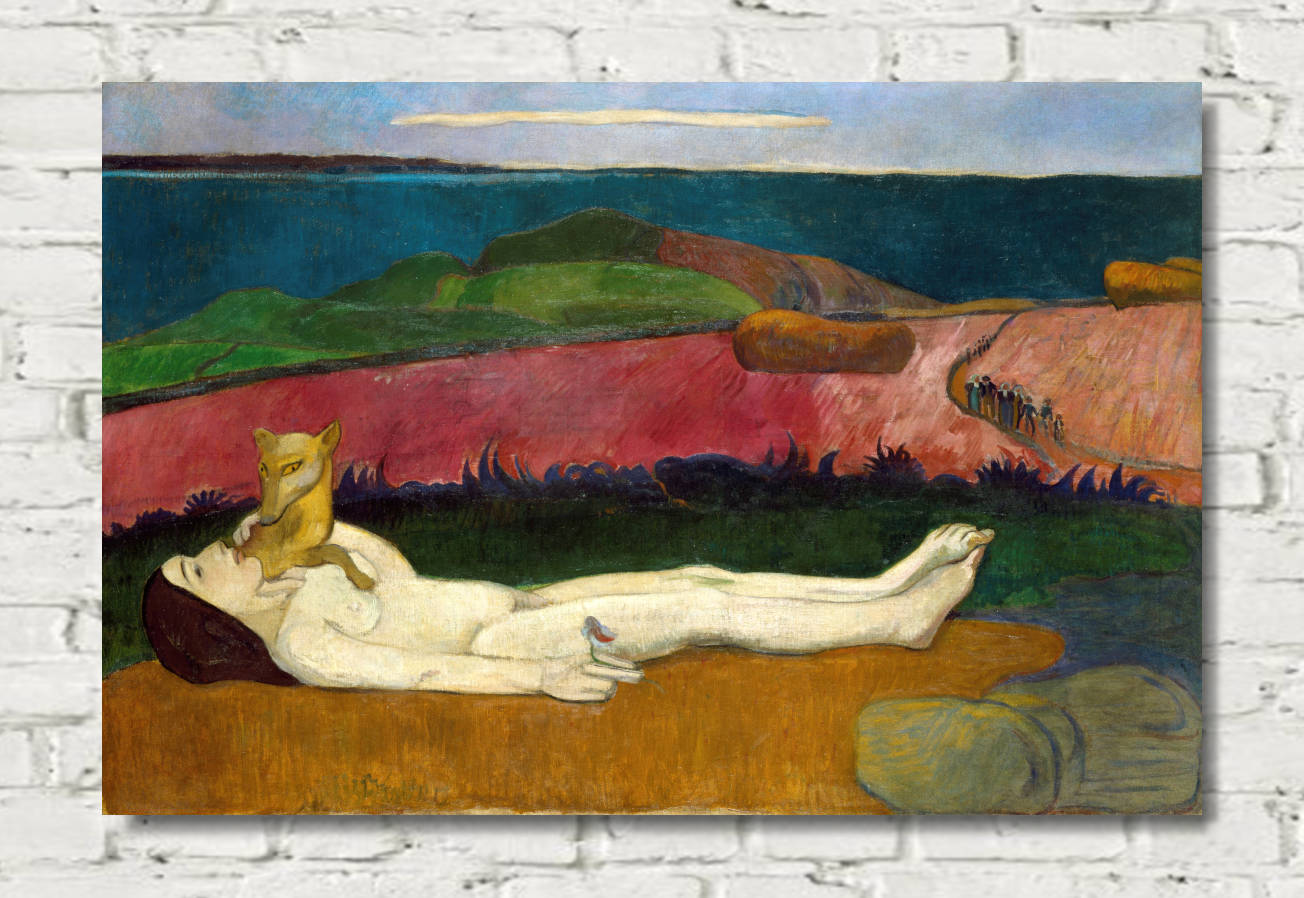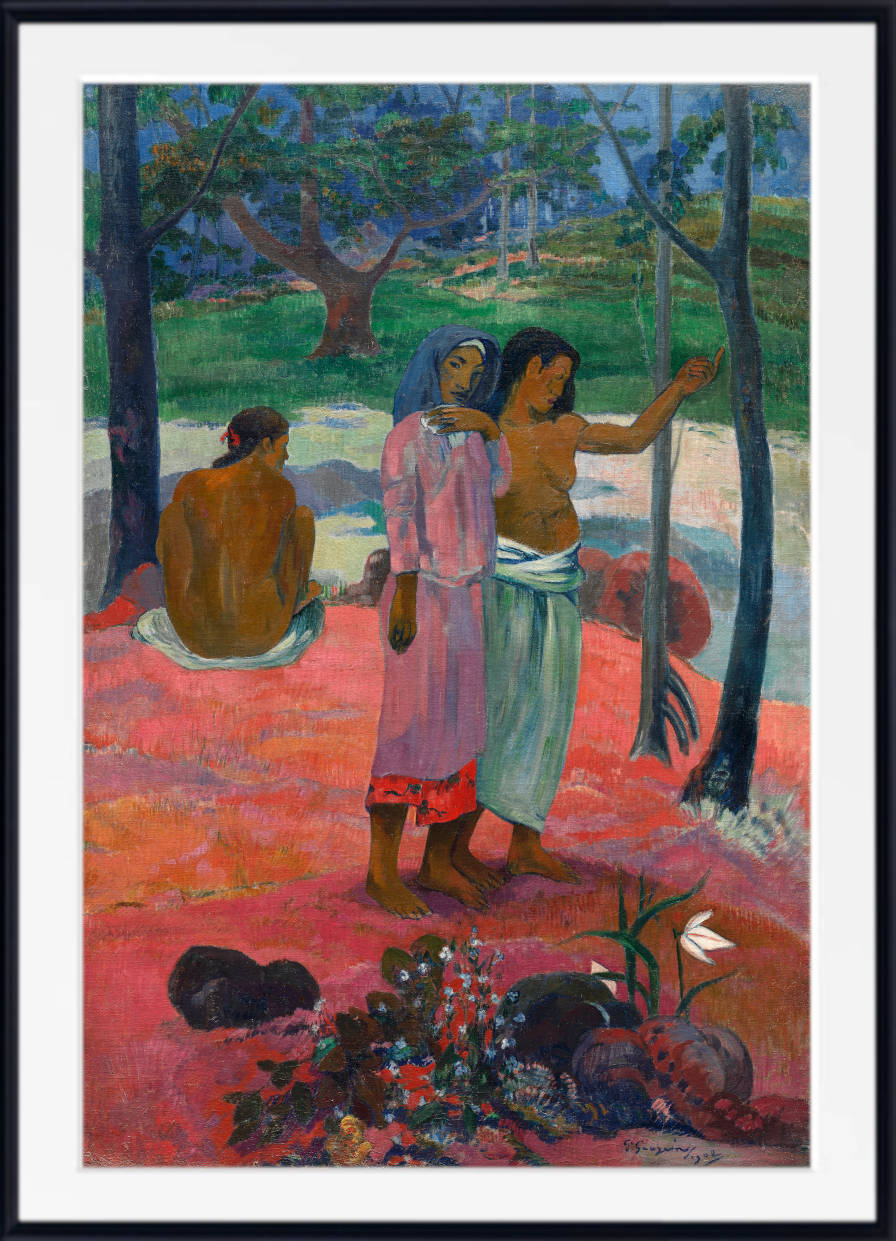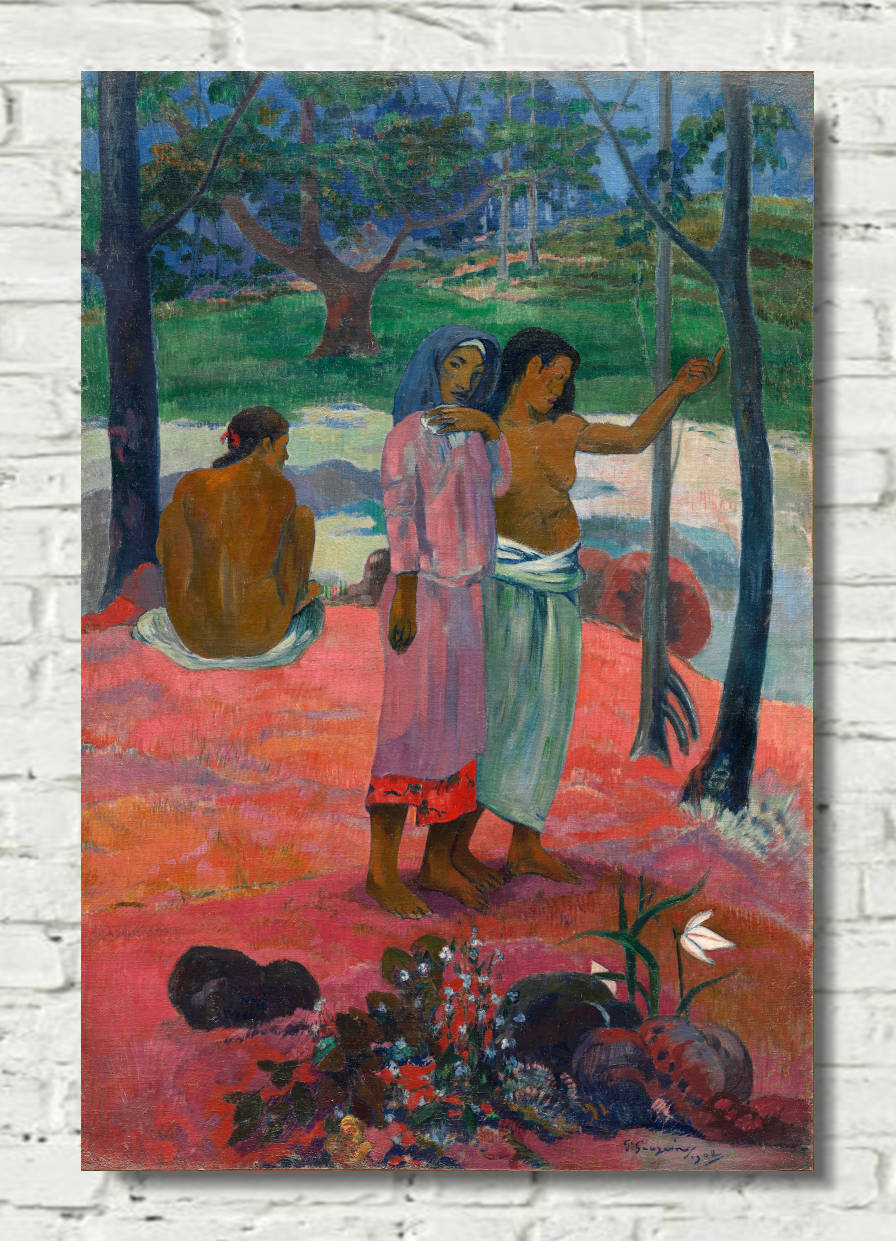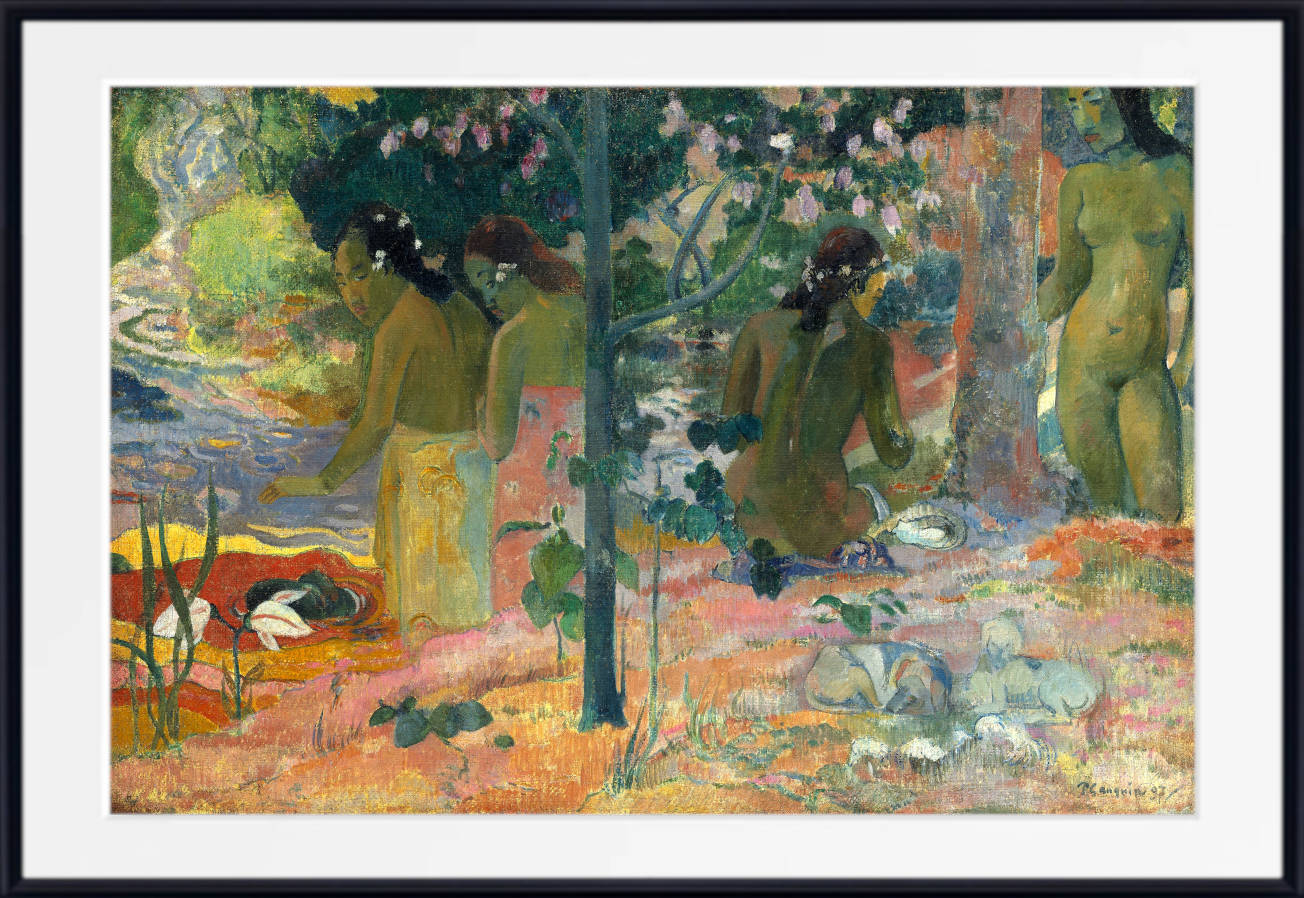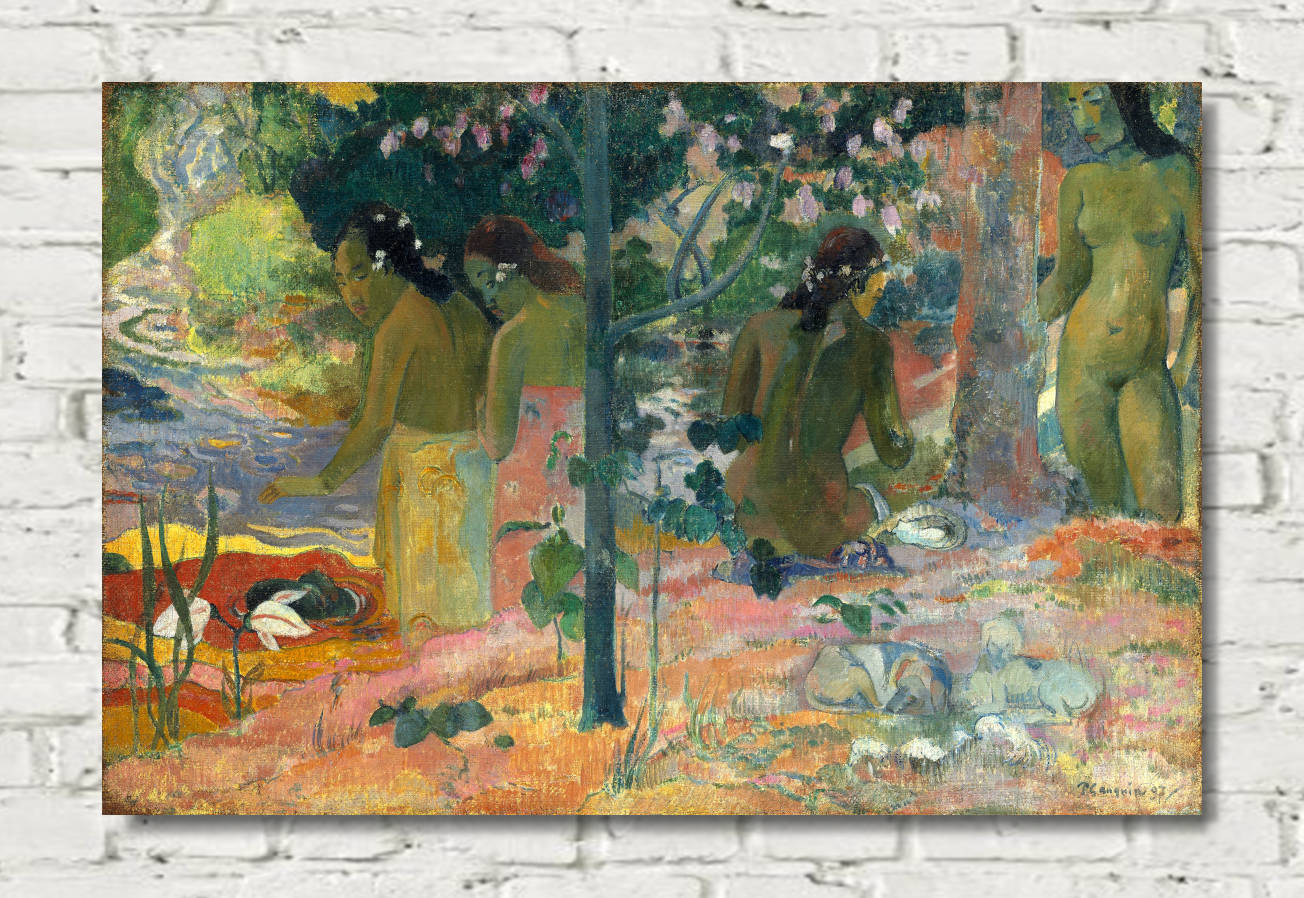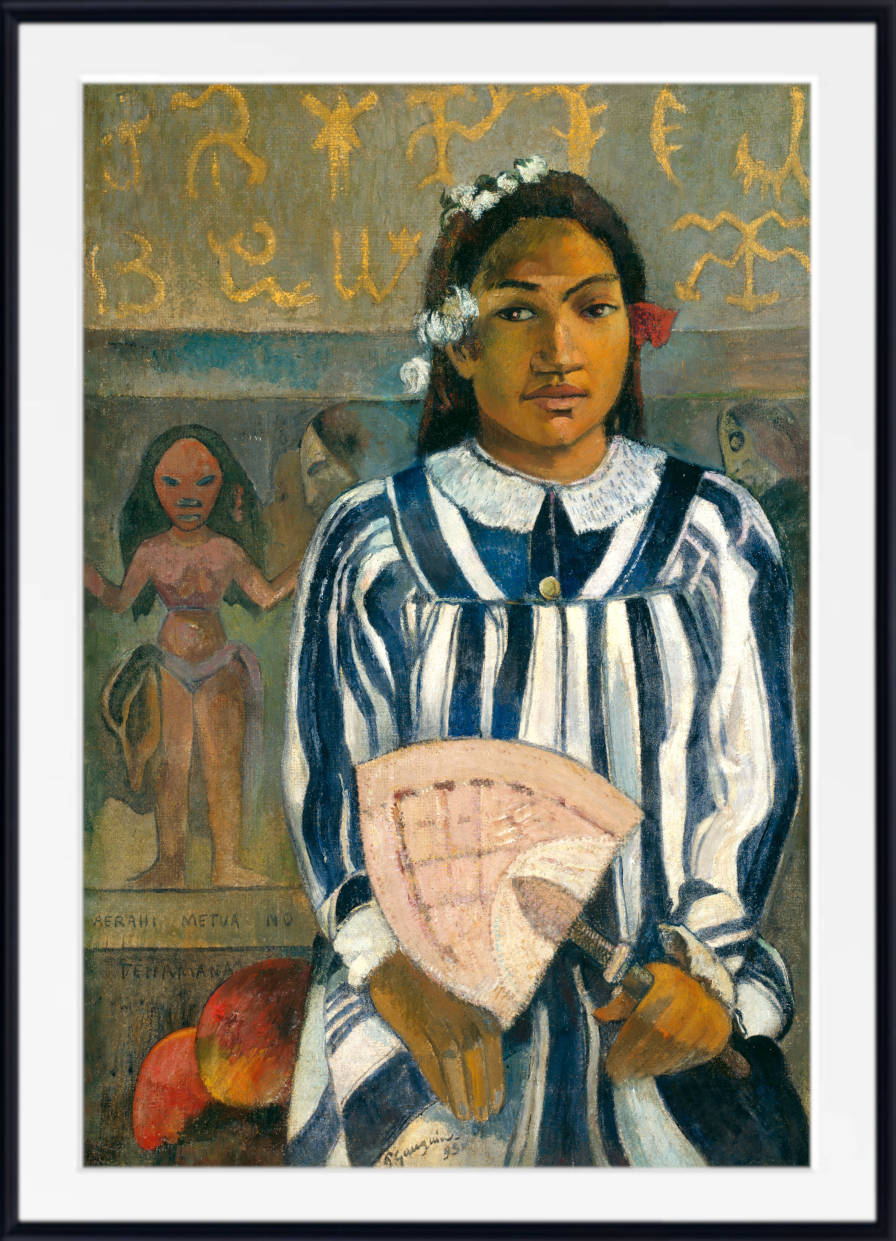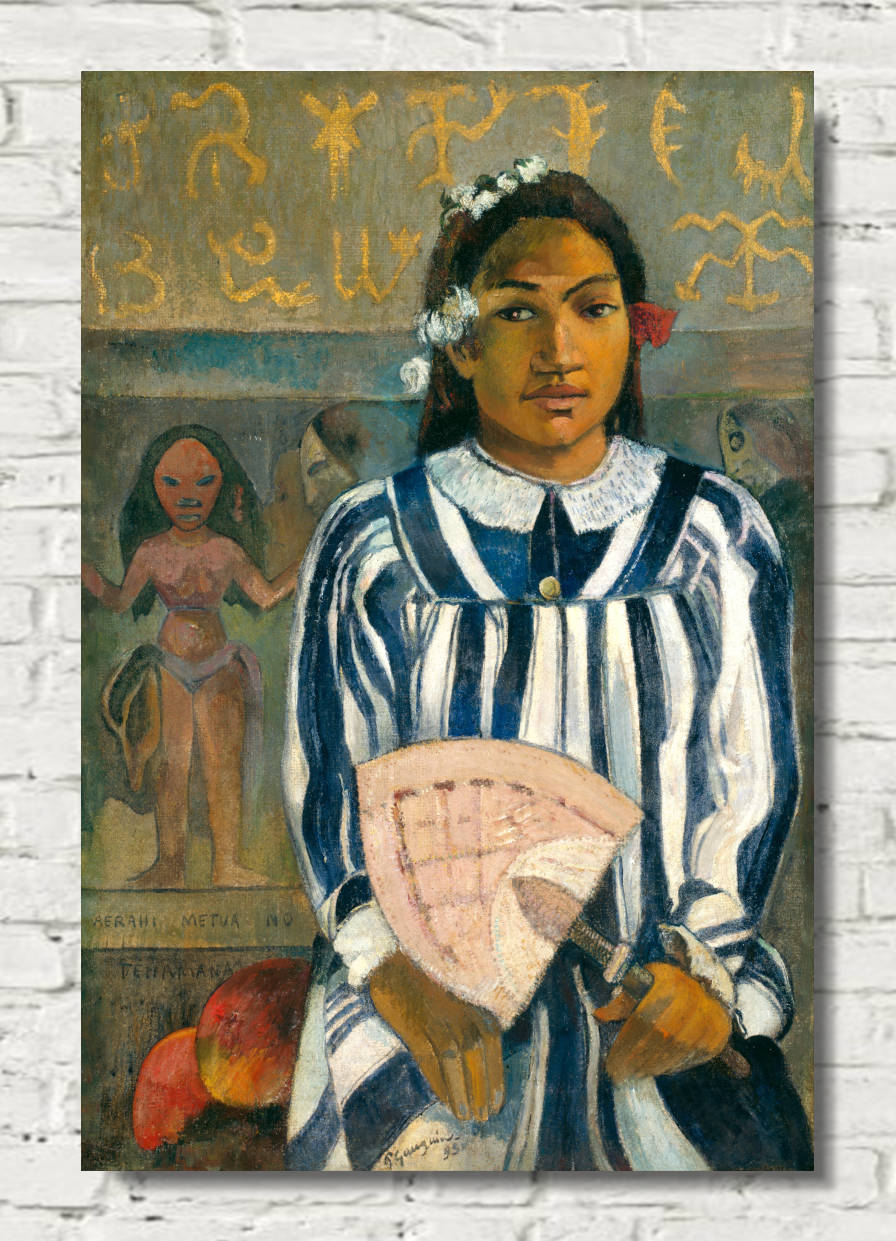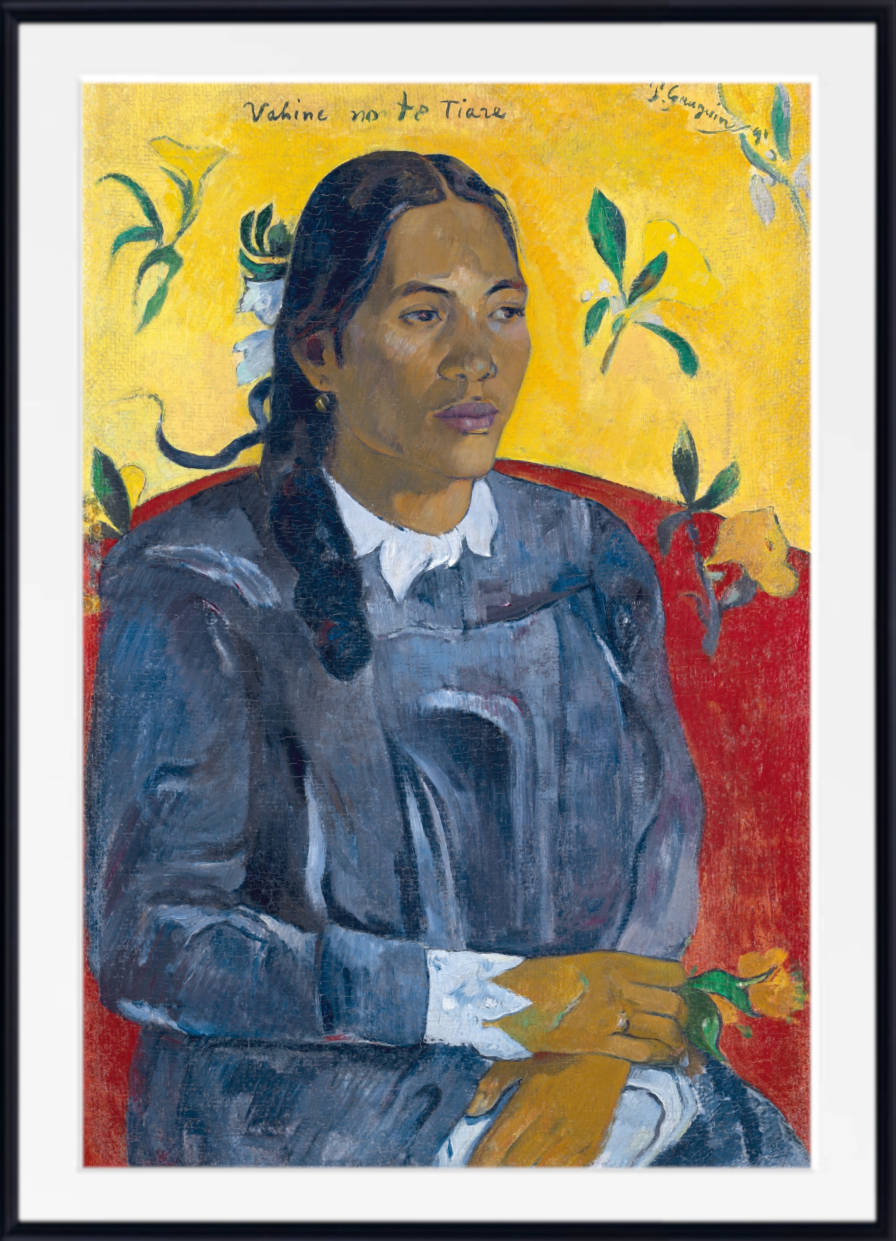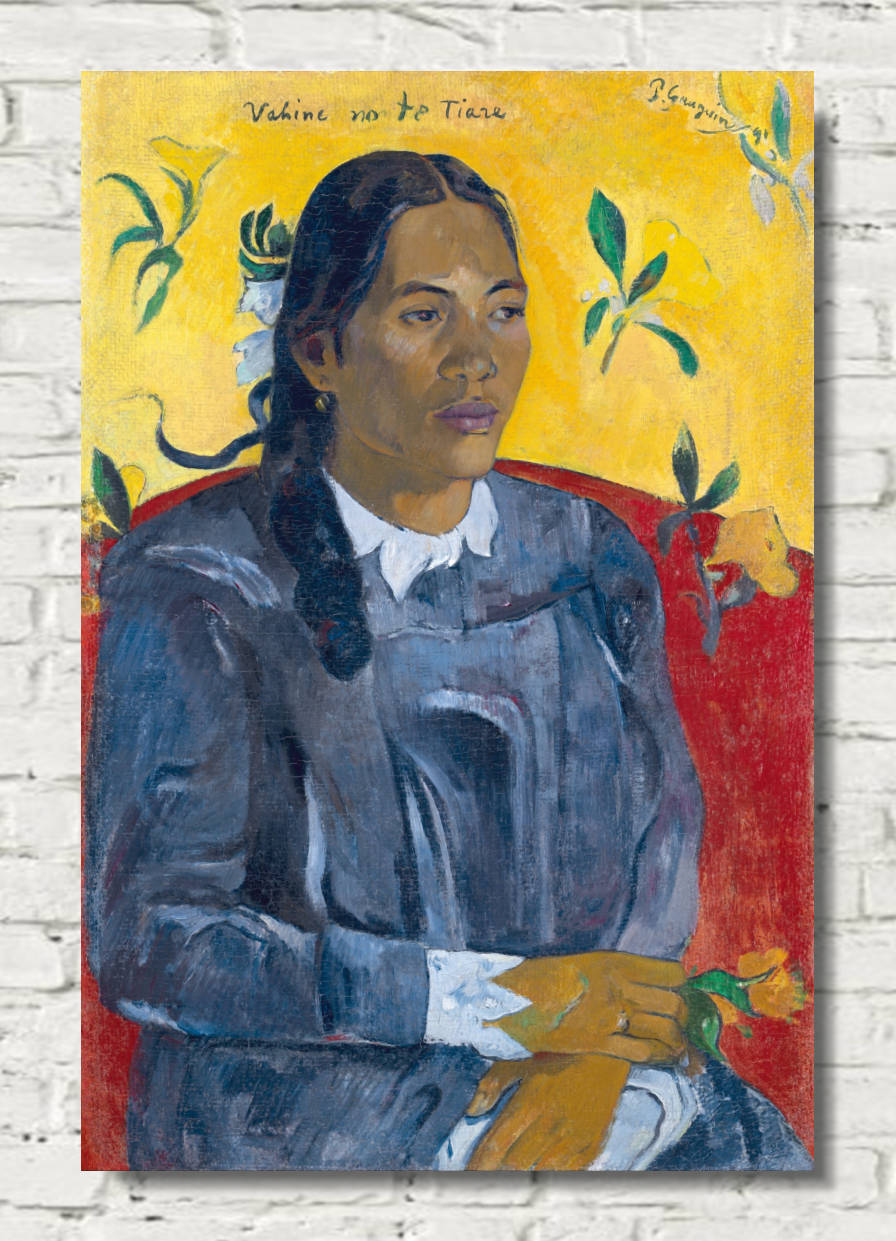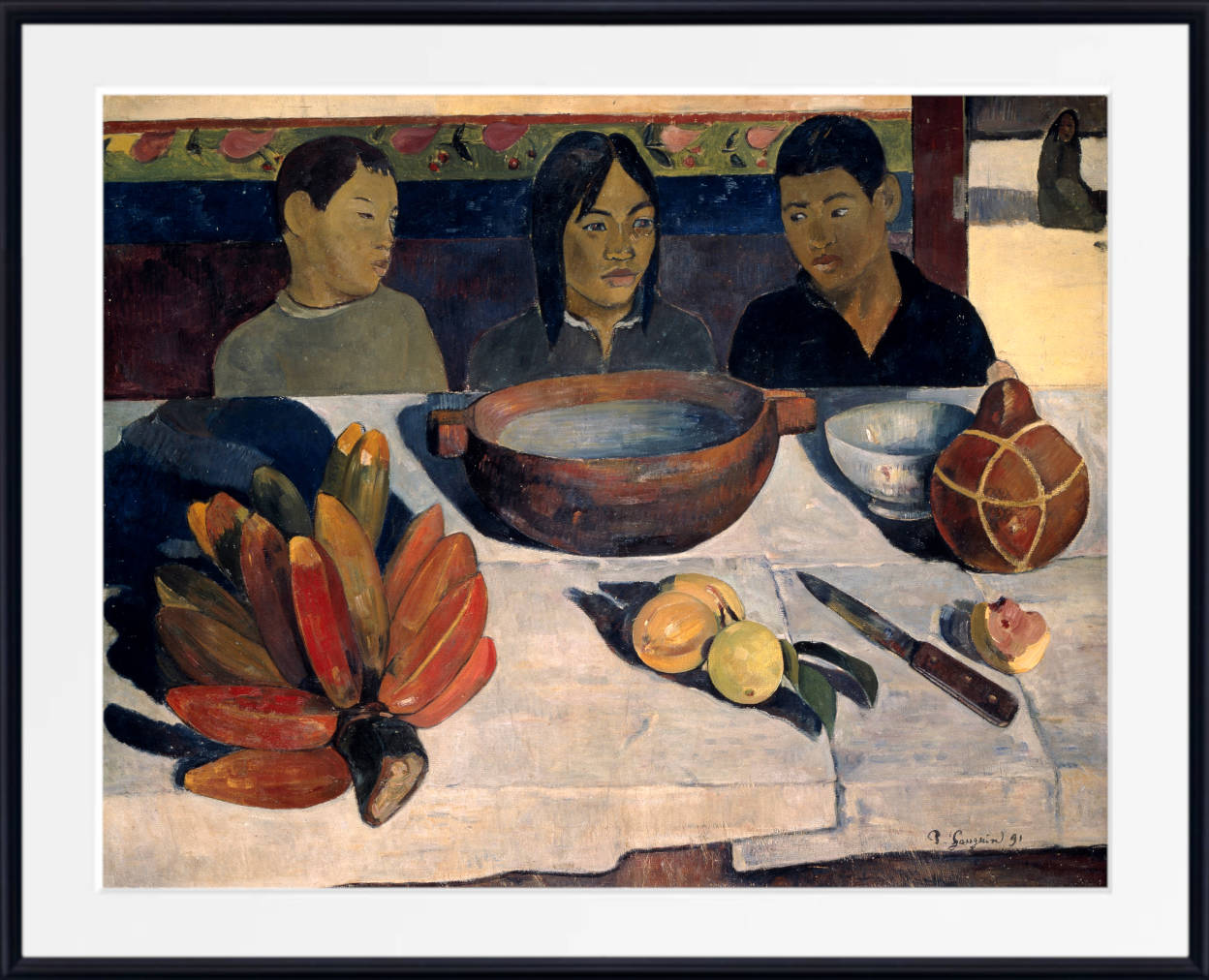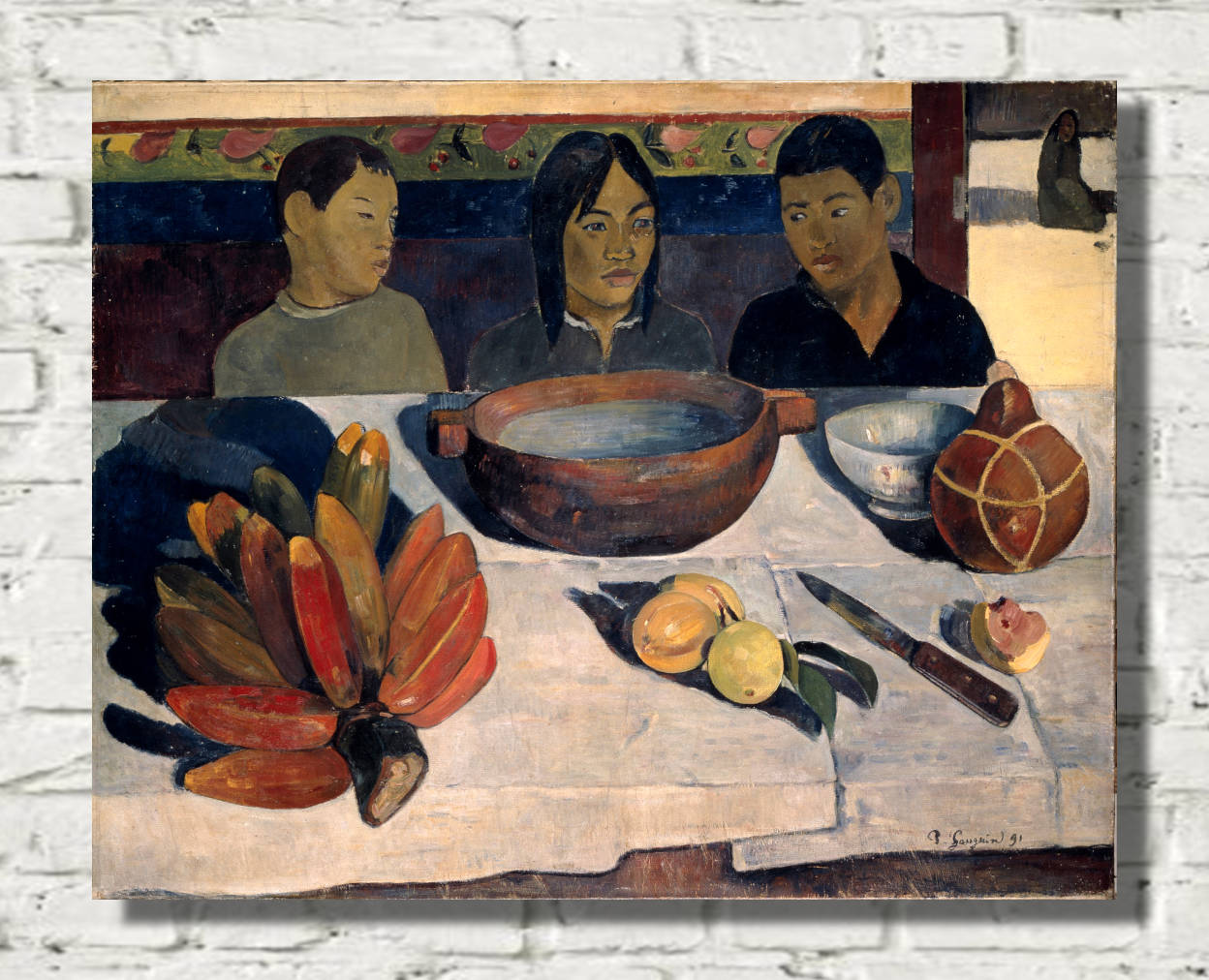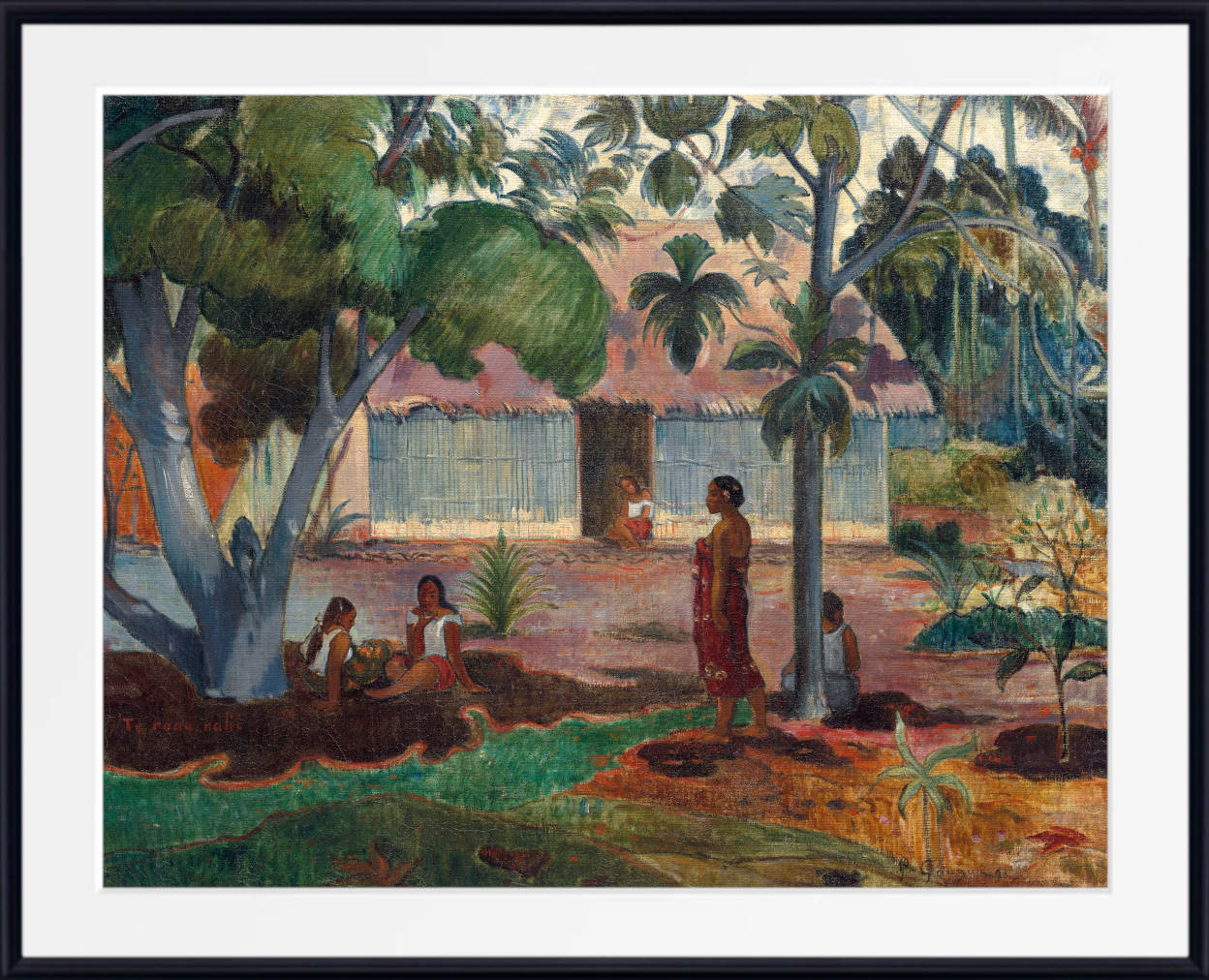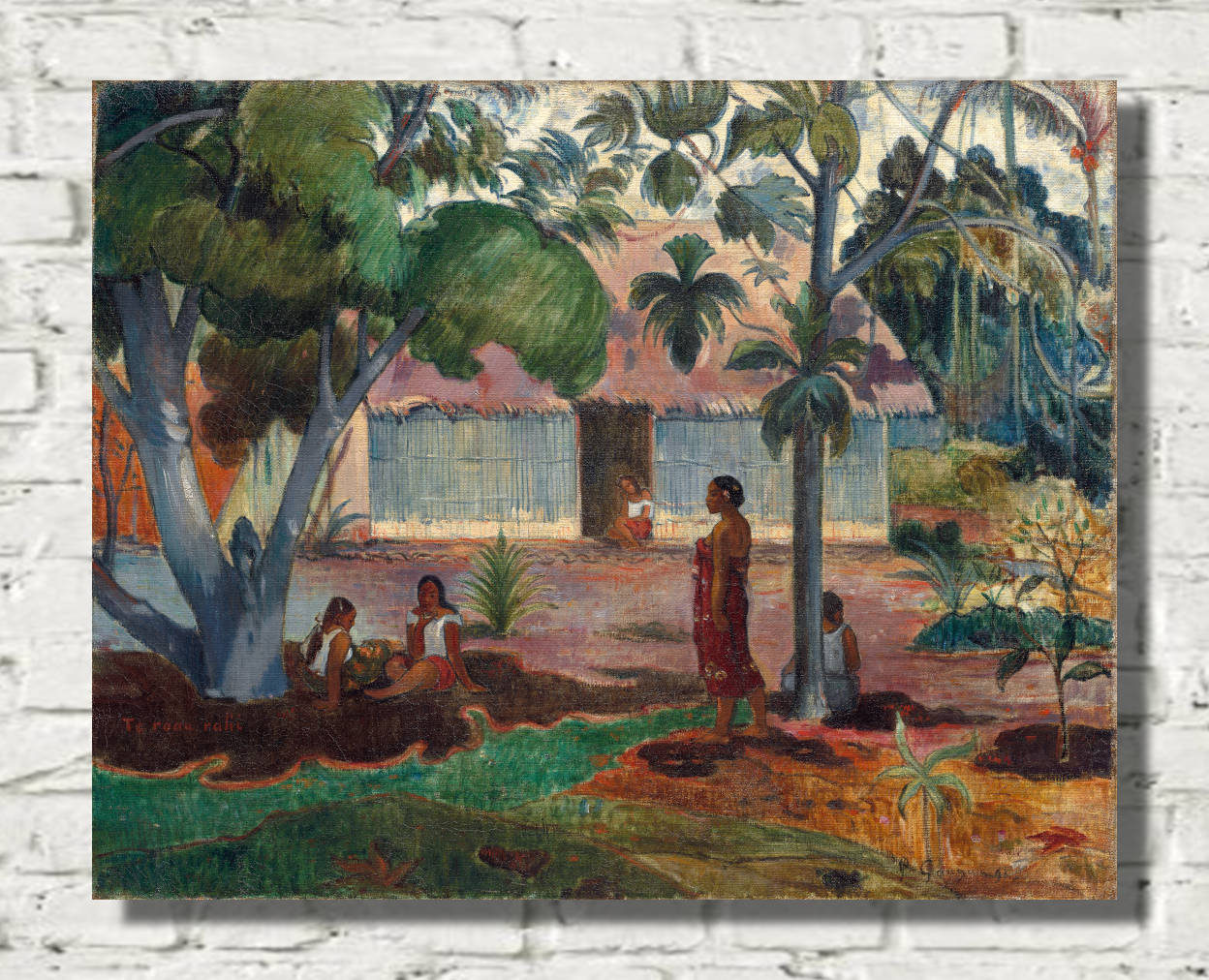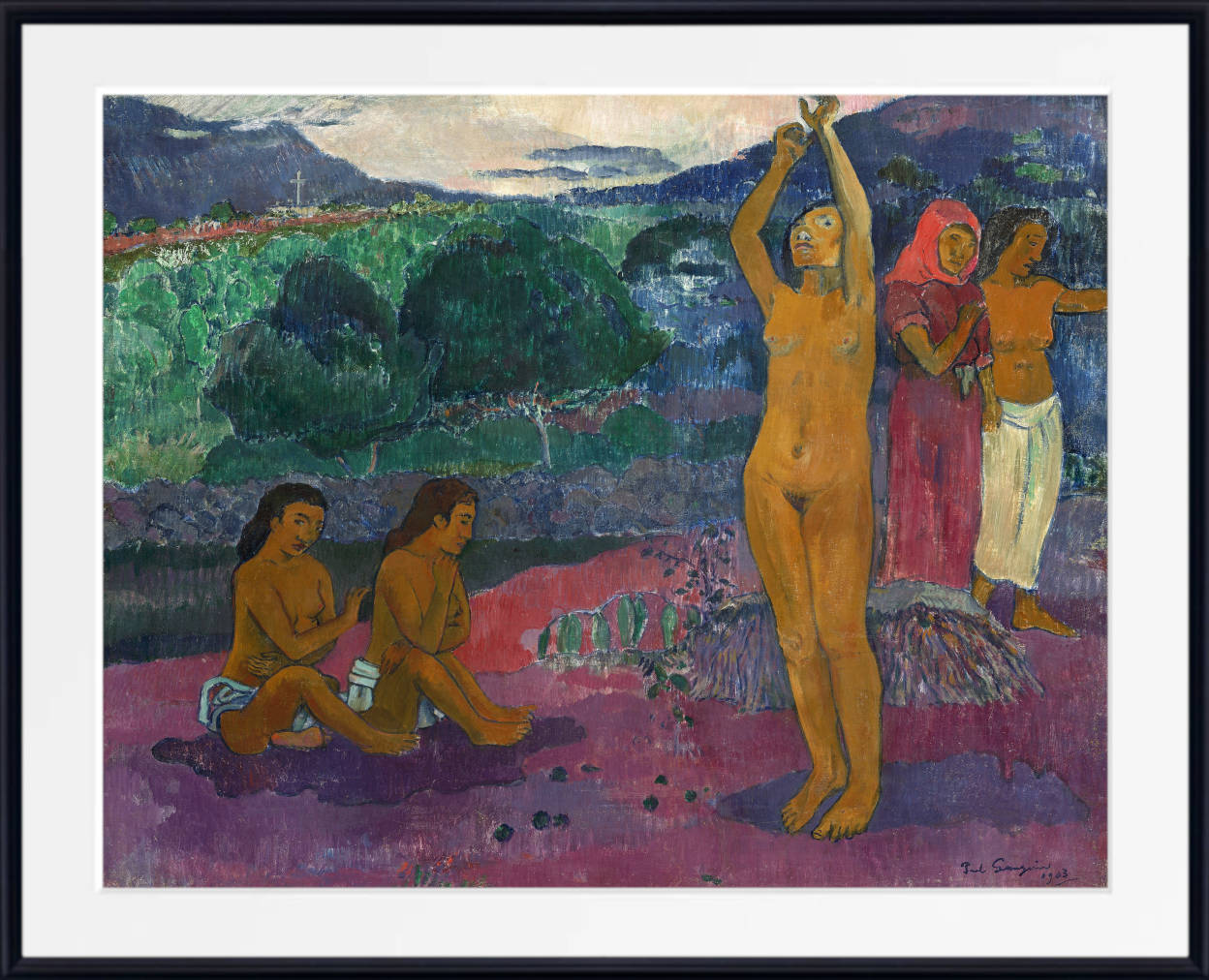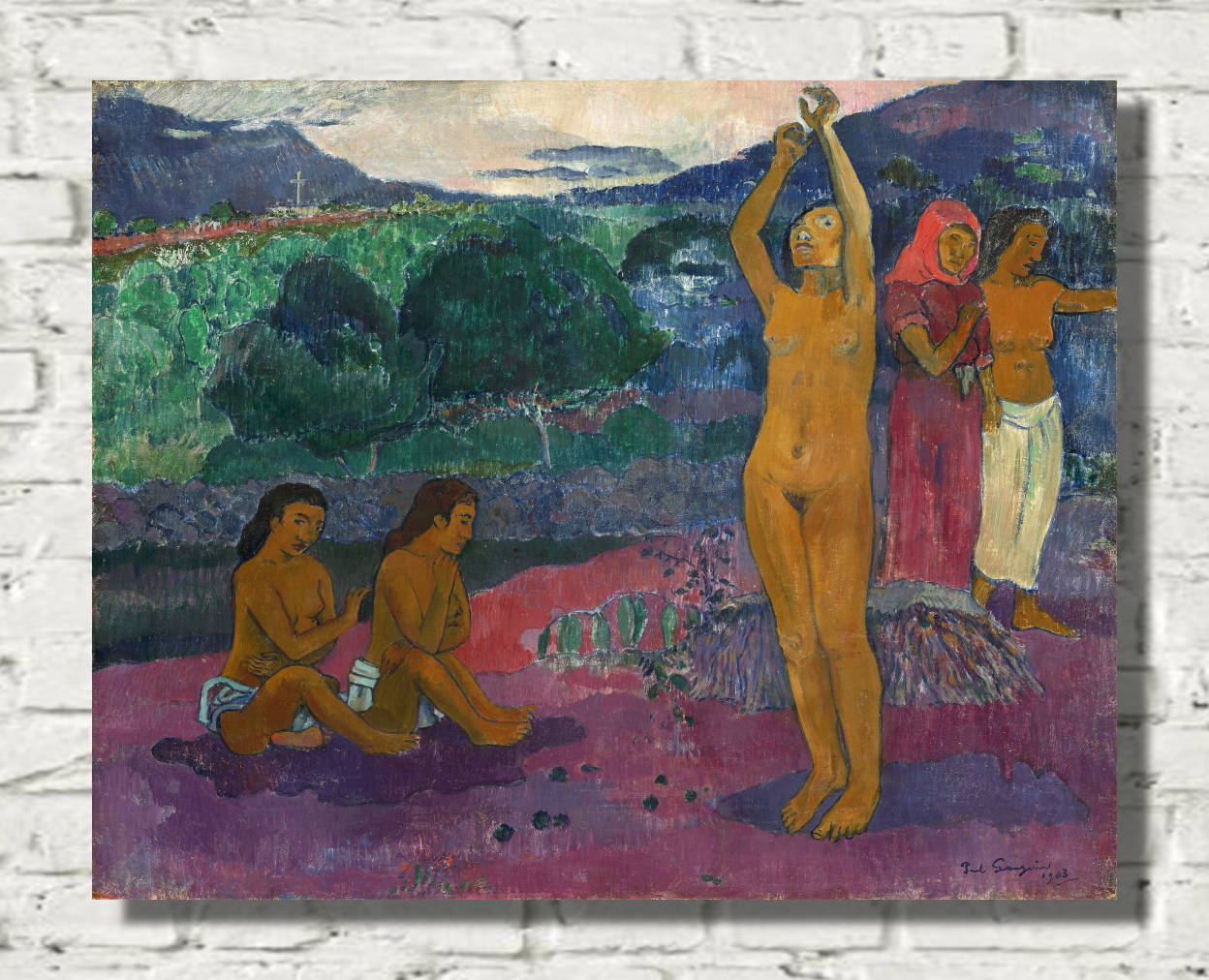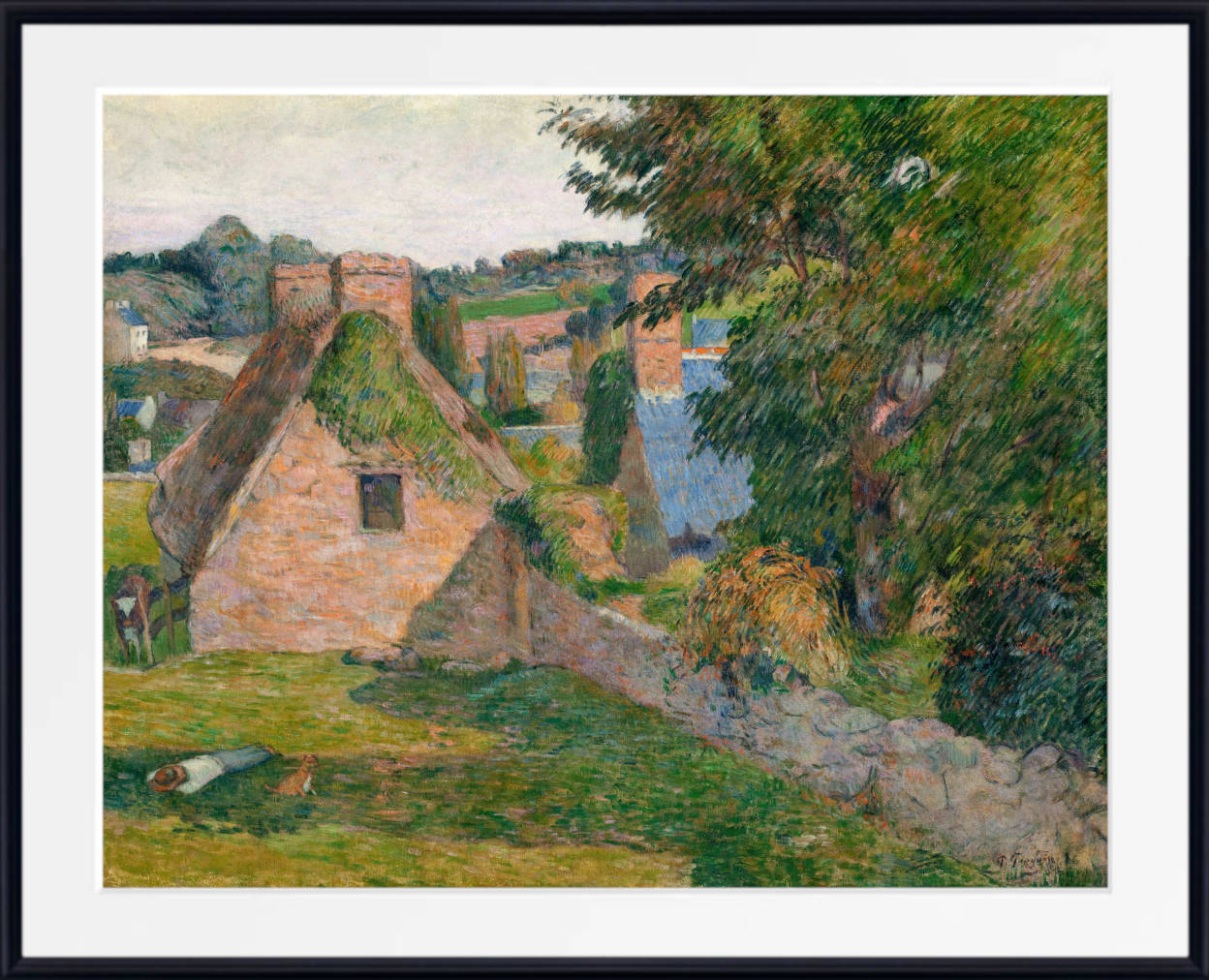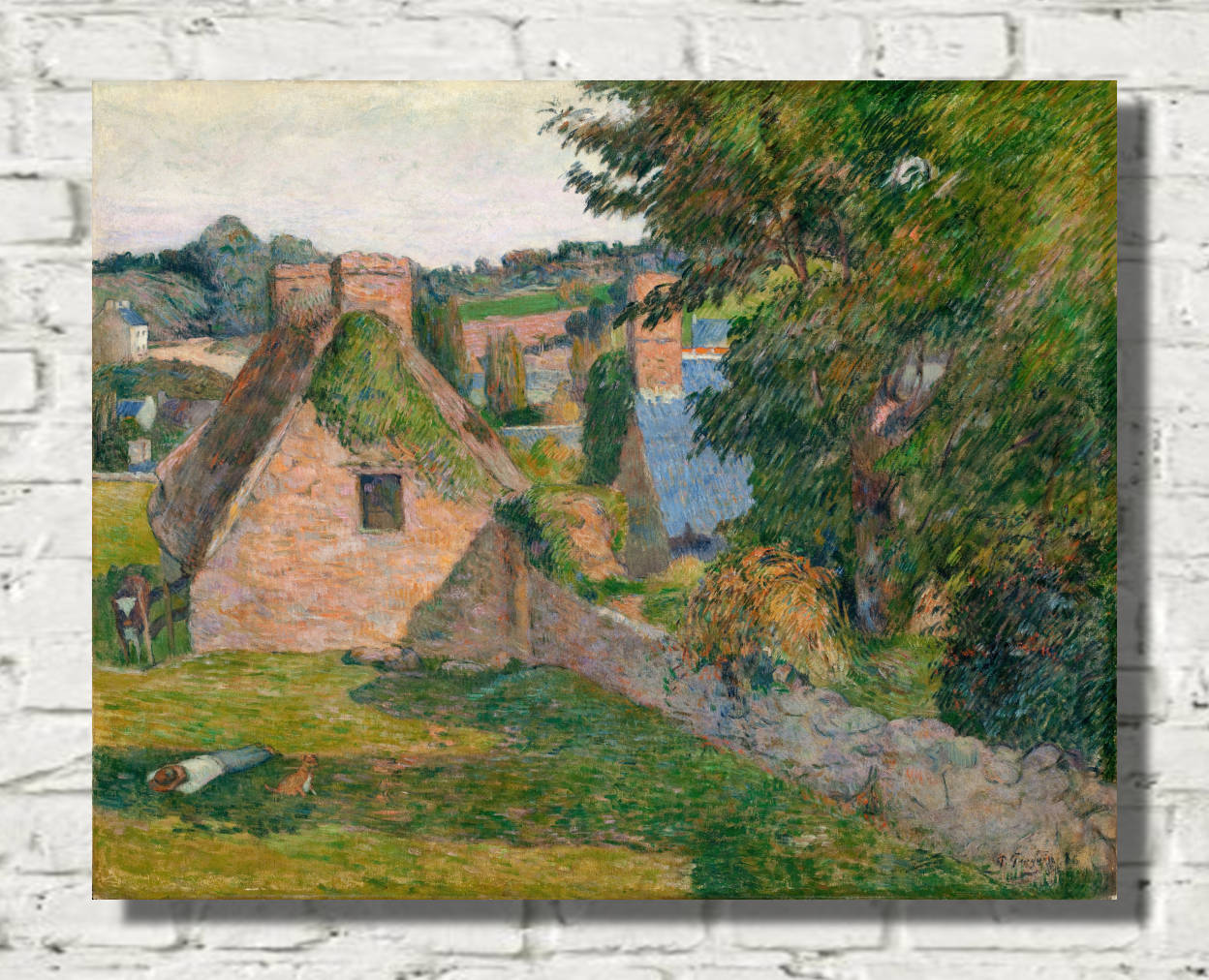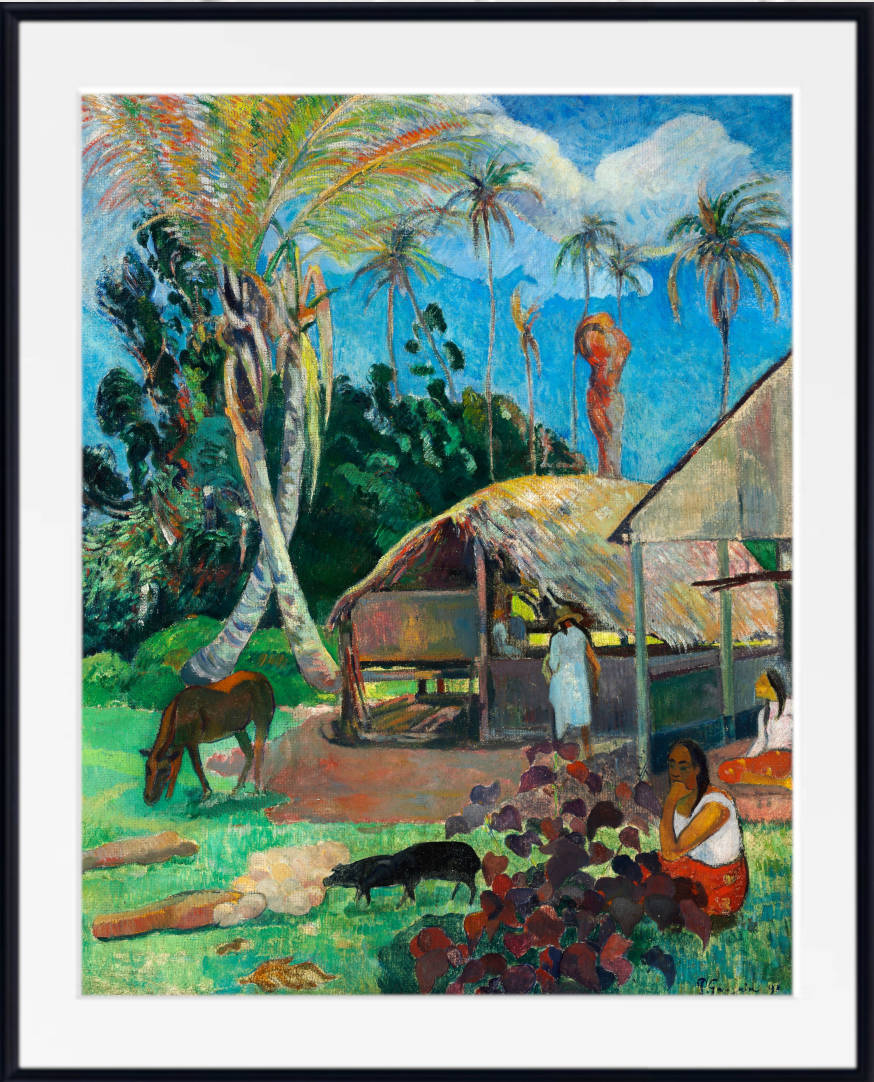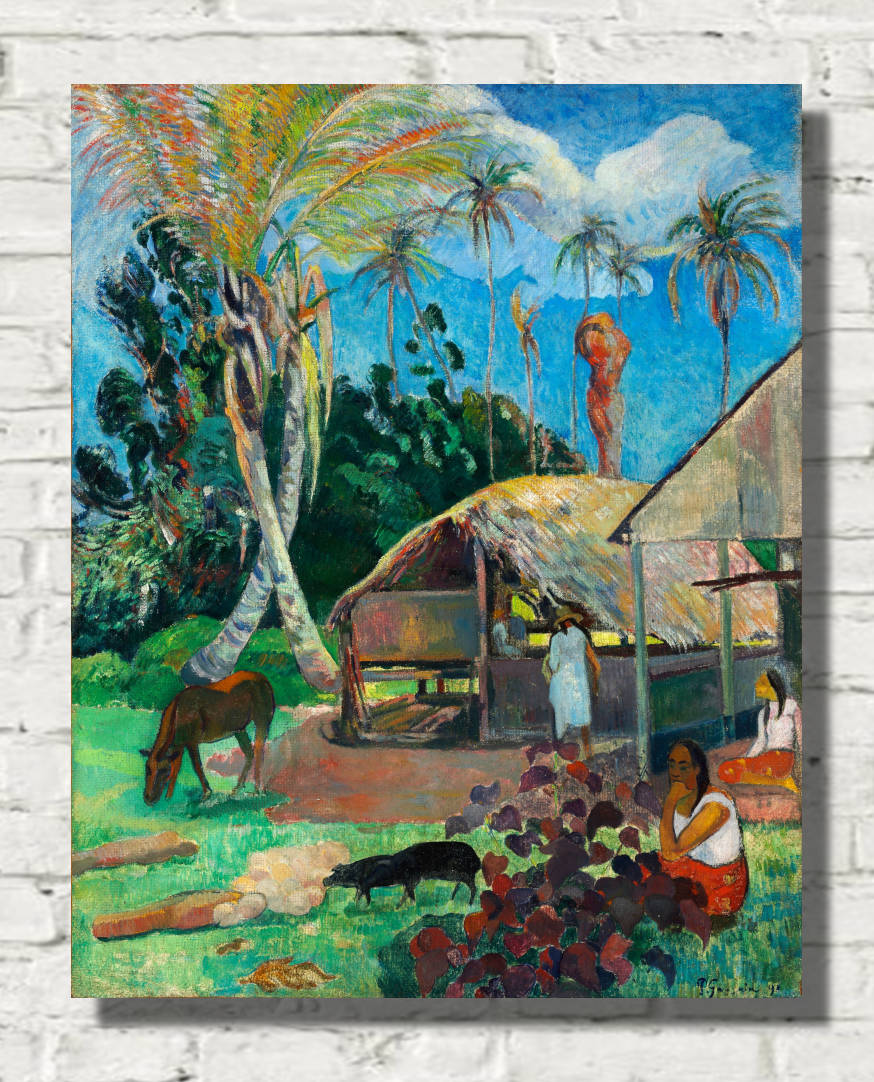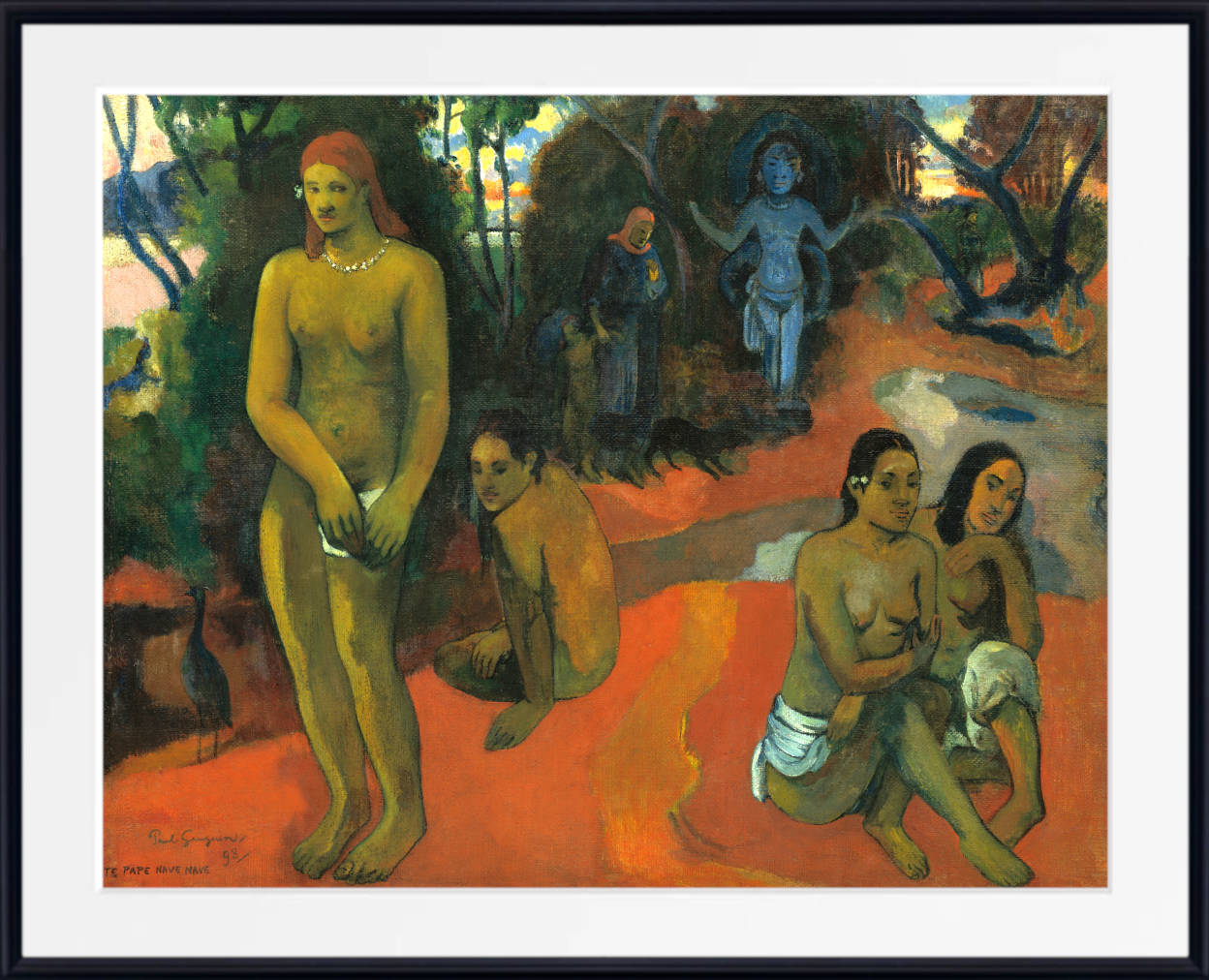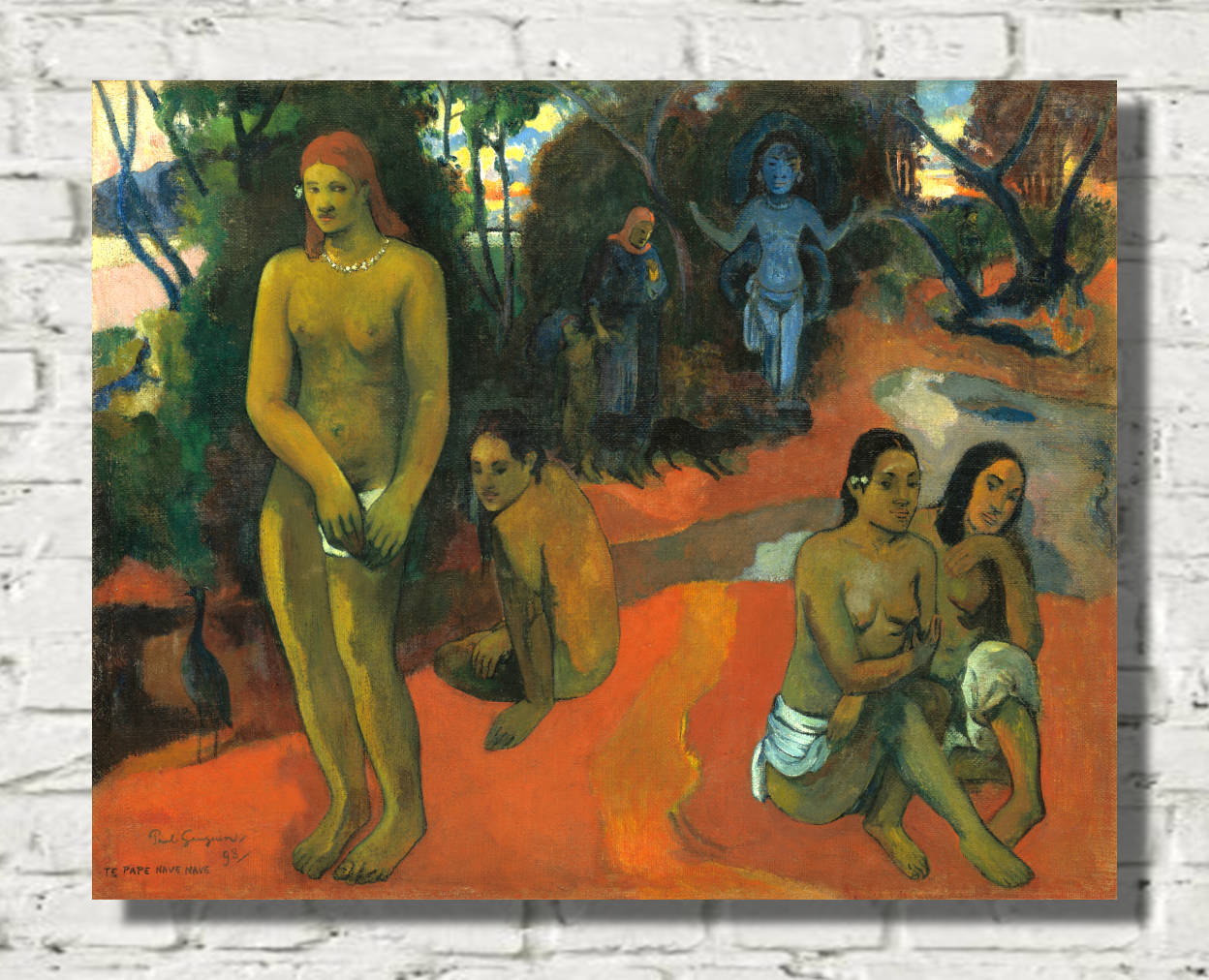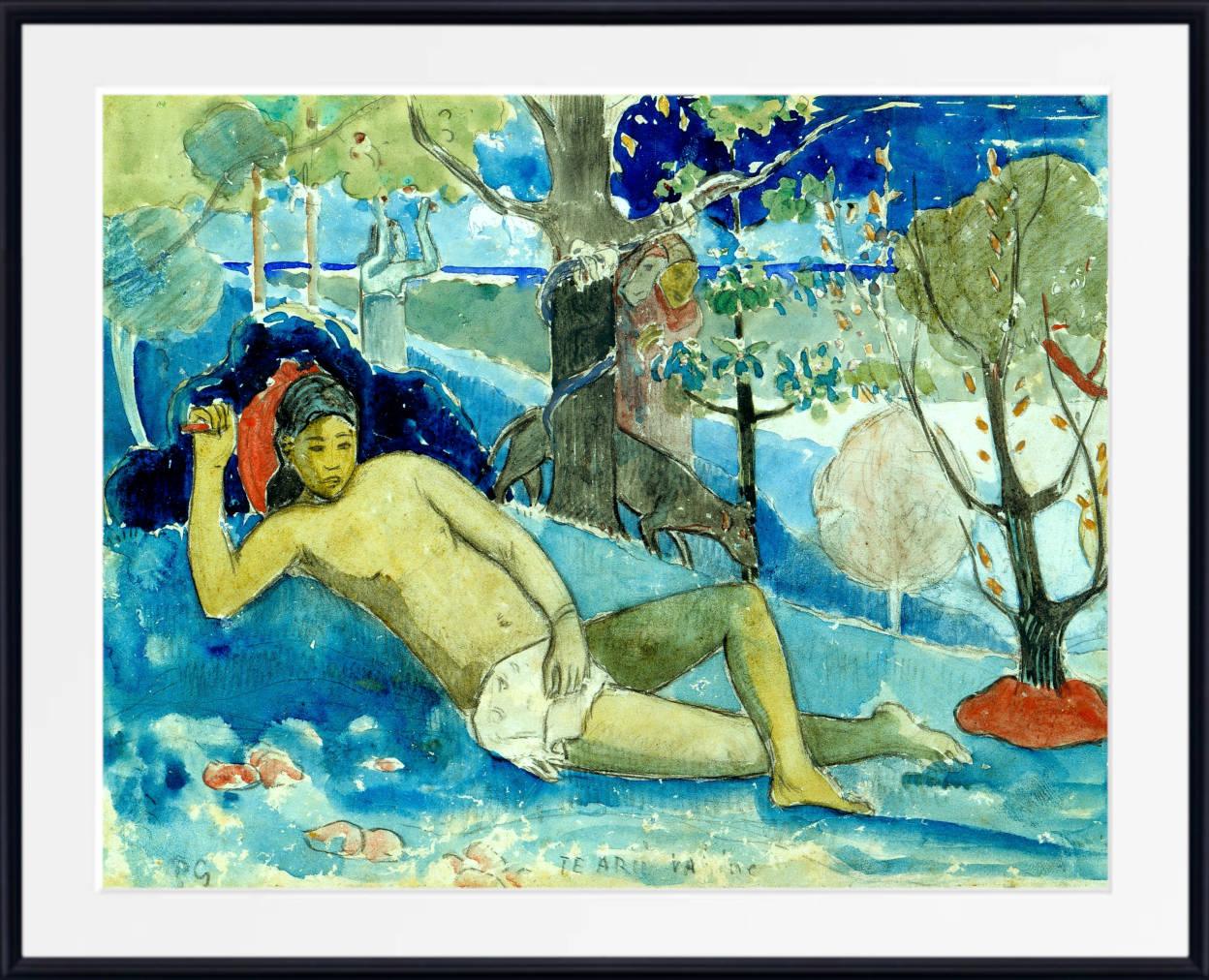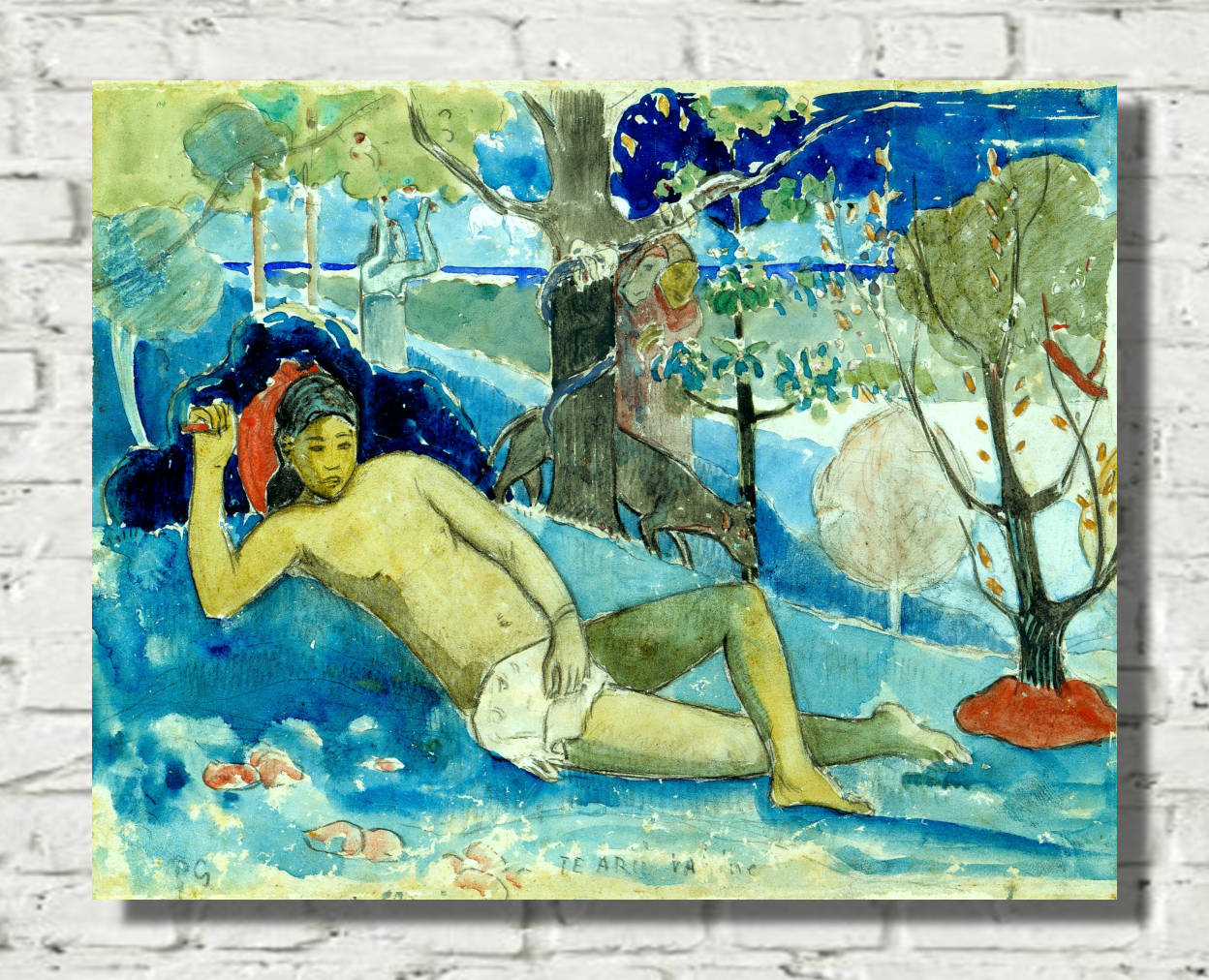Paul Gauguin's Greatest Tahitian paintings:
| # | Painting Title | Year |
|---|---|---|
| 1 | Vahine no te tiare (Woman with a Flower) | 1891 |
| 2 | Manao tupapau (Spirit of the Dead Watching) | 1892 |
| 3 | Parau api (What’s New?) | 1892 |
| 4 | Fatata te Miti (By the Sea) | 1892 |
| 5 | Nafea faa ipoipo? (When Will You Marry?) | 1892 |
| 6 | Arearea (Joyousness) | 1892 |
| 7 | The Seed of the Areoi | 1893 |
| 8 | Ia Orana Maria (Hail Mary) | 1894 |
| 9 | Day of the God (Mahana no Atua) | 1894 |
| 10 | Ta matete (The Market) (1892) | 1896 |
| 11 | Te arii vahine (The Queen of Beauty or The Noble Queen) (1896-1897) | 1897 |
| 12 | Where Do We Come From? What Are We? Where Are We Going? | 1897 |
| 13 | Two Tahitian Women | 1899 |
| 14 | Te Arii Vahine – La Femme Aux Mangos (II) | 1897 |
Introduction to Paul Gauguin’s Tahitian Art
Paul Gauguin’s journey to Tahiti in 1891 marked a turning point in his artistic career. Seeking an escape from European modernity, he immersed himself in the culture and landscapes of French Polynesia, creating some of his most iconic works. His Tahitian paintings are celebrated for their vibrant color palette, symbolic imagery, and dreamlike compositions, reflecting his deep fascination with what he perceived as an unspoiled paradise. However, his portrayal of Tahitian life, while influential, remains a subject of debate regarding its authenticity and ethical implications.
The Themes and Symbolism in Gauguin’s Tahitian Paintings
Gauguin’s Tahitian paintings are distinguished by their use of symbolism and spiritual themes, blending indigenous beliefs with his own artistic vision. His works often depict Tahitian women, mythical figures, and tropical landscapes, creating a visual language that defies Western artistic conventions.
-
Mysticism and Spirituality: Paintings such as Mahana No Atua (Day of the God) (1894) and Where Do We Come From? What Are We? Where Are We Going? (1897-1898) incorporate Polynesian religious motifs and existential themes.
-
Sensuality and Femininity: His portrayals of Tahitian women, such as Two Tahitian Women (1899) and Spirit of the Dead Watching (1892), emphasize their physicality while also alluding to themes of innocence, fear, and exoticism.
-
Dreamlike Compositions: Gauguin’s use of non-naturalistic colors and flattened forms creates an ethereal, almost surreal effect, as seen in The Siesta (1894) and Fatata te Miti (By the Sea) (1892).
Gauguin’s Color Palette and Technique in Tahiti
Gauguin’s approach to color and form in his Tahitian paintings was revolutionary. Moving away from Impressionist techniques, he embraced:
-
Bold, Non-Realistic Colors: Inspired by Cloisonnism and Japanese prints, Gauguin used striking hues to evoke mood rather than realism.
-
Flattened Perspective: He rejected traditional depth and shading, instead favoring broad areas of color separated by strong outlines.
-
Symbolist Influence: His works often included enigmatic figures and elements that carried deeper meanings, enhancing their narrative complexity.
The Impact and Legacy of Gauguin’s Tahitian Paintings
While Gauguin’s Tahitian works were initially dismissed by European audiences, they later became foundational to modern art movements like Fauvism and Expressionism. Artists such as Henri Matisse and Pablo Picasso were profoundly influenced by his innovative use of color and form.
However, modern interpretations of his Tahitian period also address the ethical concerns surrounding his representation of Polynesian culture and his controversial personal life. Despite these complexities, Gauguin’s Tahitian paintings remain an essential part of art history, offering a vivid, albeit romanticized, vision of the South Pacific.
Related Articles
Post Impressionism
The Paintings of Paul Gauguin: A Journey Through Color and Symbolism
References
Books
-
Danielsson, Bengt. Gauguin in the South Seas.
-
Publisher: Doubleday
-
Year: 1965
-
Description: A detailed account of Gauguin’s life in Tahiti and the Marquesas, with discussion on the cultural influences that shaped his paintings.
-
-
Mathews, Nancy Mowll. Paul Gauguin: An Erotic Life.
-
Publisher: Yale University Press
-
Year: 2001
-
Description: Explores Gauguin’s Tahitian period, including an analysis of his artistic themes and controversial personal life.
-
-
Eisenman, Stephen F. Gauguin’s Skirt.
-
Publisher: Thames & Hudson
-
Year: 1997
-
Description: Examines the influence of Tahitian culture and colonial politics on Gauguin’s work, with a focus on gender and symbolism.
-
-
Silverman, Debora. Van Gogh and Gauguin: The Search for Sacred Art.
-
Publisher: Farrar, Straus and Giroux
-
Year: 2000
-
Description: Discusses Gauguin’s spiritual and artistic quest, particularly in his Tahitian works.
-
-
Gowing, Lawrence. Gauguin.
-
Publisher: Thames & Hudson (World of Art series)
-
Year: 1971
-
Description: A concise yet insightful overview of Gauguin’s career, including his Tahitian paintings.
-
-
Gauguin, Paul. Noa Noa: The Tahitian Journal.
-
Publisher: Chronicle Books
-
Year: Various editions
-
Description: Gauguin’s personal reflections on his first Tahitian trip, providing insights into his creative process.
-
Exhibition Catalogs
-
Ives, Colta, et al. Gauguin in New York Collections: The Lure of the Exotic.
-
Publisher: Metropolitan Museum of Art
-
Year: 2002
-
Description: A catalog of an exhibition showcasing Gauguin’s Tahitian paintings held in New York.
-
-
Bretell, Richard R. Gauguin and Impressionism.
-
Publisher: Yale University Press
-
Year: 2005
-
Description: Discusses Gauguin’s shift from Impressionism to the symbolic and exotic themes of his Tahitian period.
-
-
Groom, Gloria. Gauguin: Artist as Alchemist.
-
Publisher: Art Institute of Chicago
-
Year: 2017
-
Description: Explores Gauguin’s experimental use of materials and techniques in his Tahitian paintings.
-
-
Pont-Aven School Museum. Gauguin and the Painters of the Exotic.
-
Publisher: Musée de Pont-Aven
-
Year: 2002
-
Description: A study of how Gauguin and other artists depicted exotic themes, with a focus on Tahitian paintings.
-
Academic Studies & Articles
-
Solomon-Godeau, Abigail. Going Native: Paul Gauguin and the Invention of Primitivist Modernism.
-
Published in: Art in America (1992)
-
Description: A critical examination of how Gauguin’s Tahitian works contributed to the concept of "primitivism" in modern art.
-
-
Lambourne, Lionel. Gauguin’s Vision of Paradise: Tahiti and the Marquesas.
-
Published in: The Burlington Magazine (1993)
-
Description: A scholarly analysis of how Gauguin represented Tahiti and its people in his paintings.
-
-
Chave, Anna C. Gauguin, Primitivism, and the Search for Otherness.
-
Published in: Art Bulletin (1994)
-
Description: Discusses the intersection of colonialism and Gauguin’s artistic vision in his Tahitian works.
-







